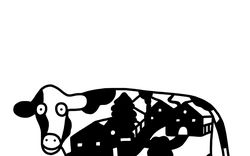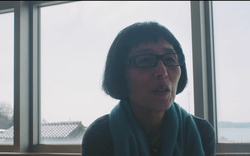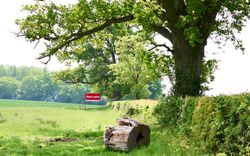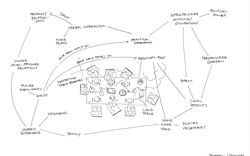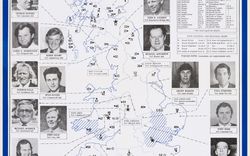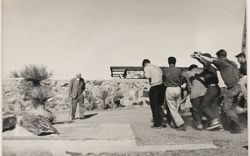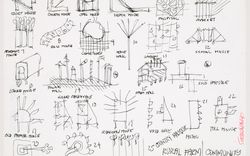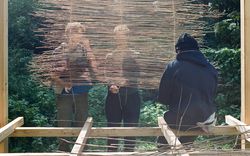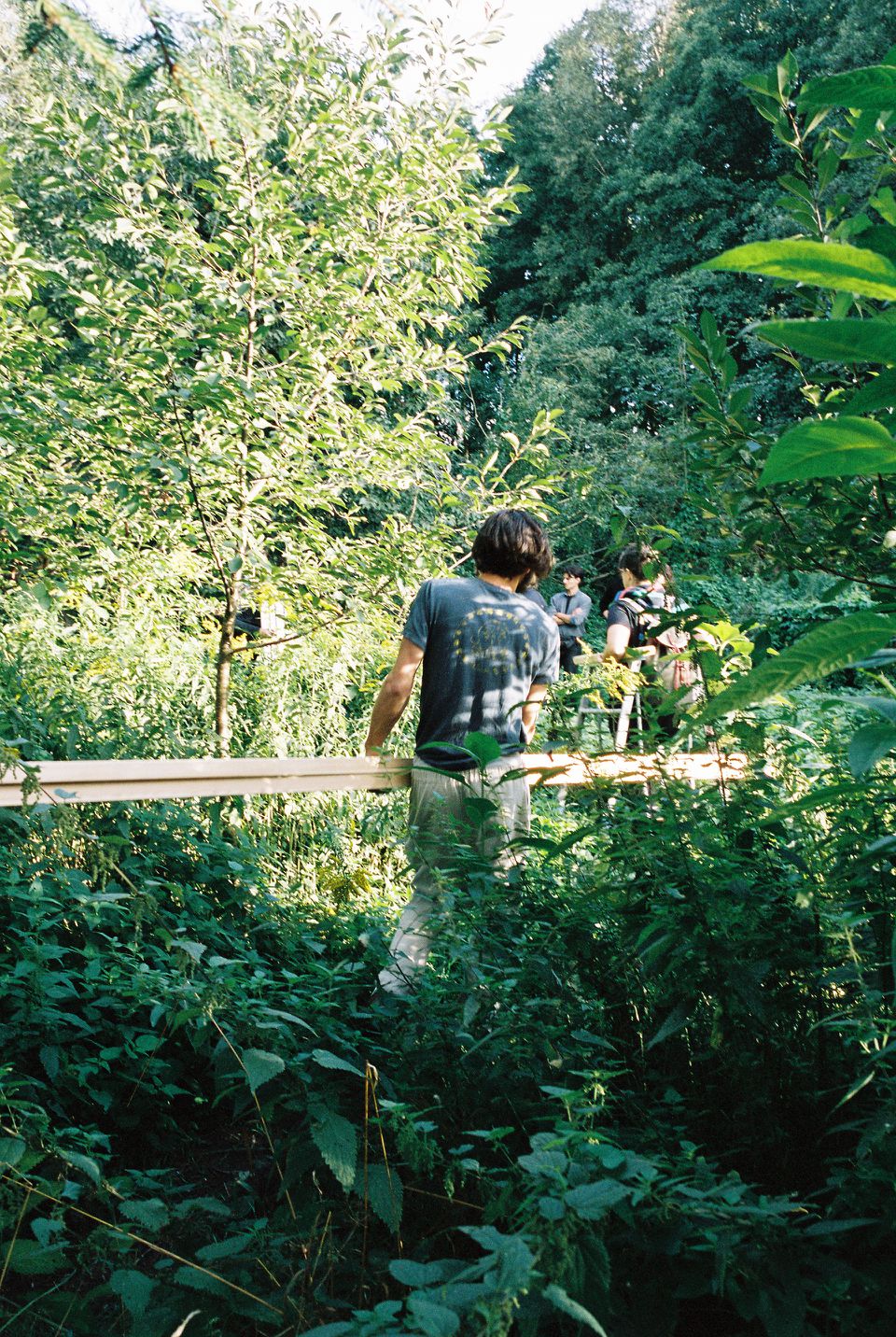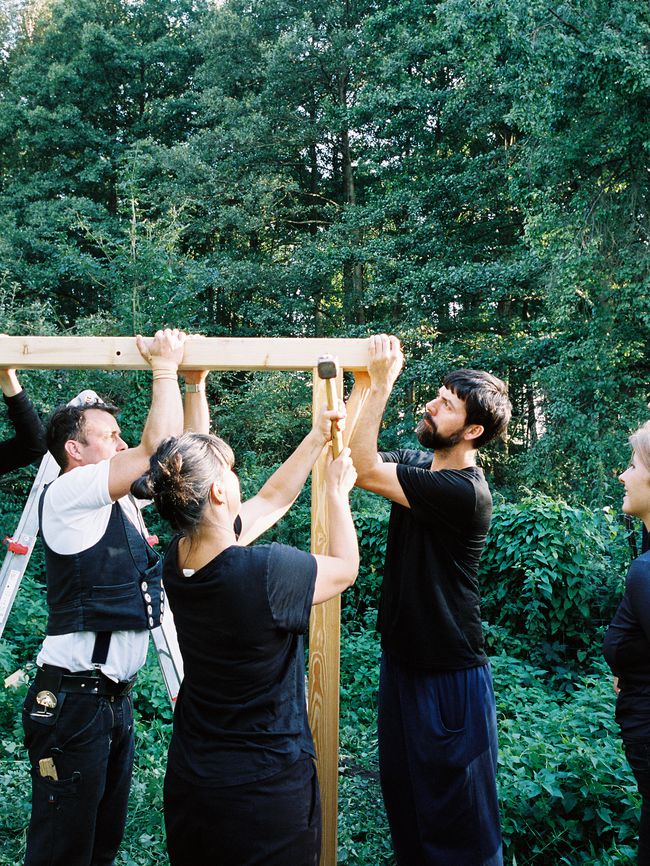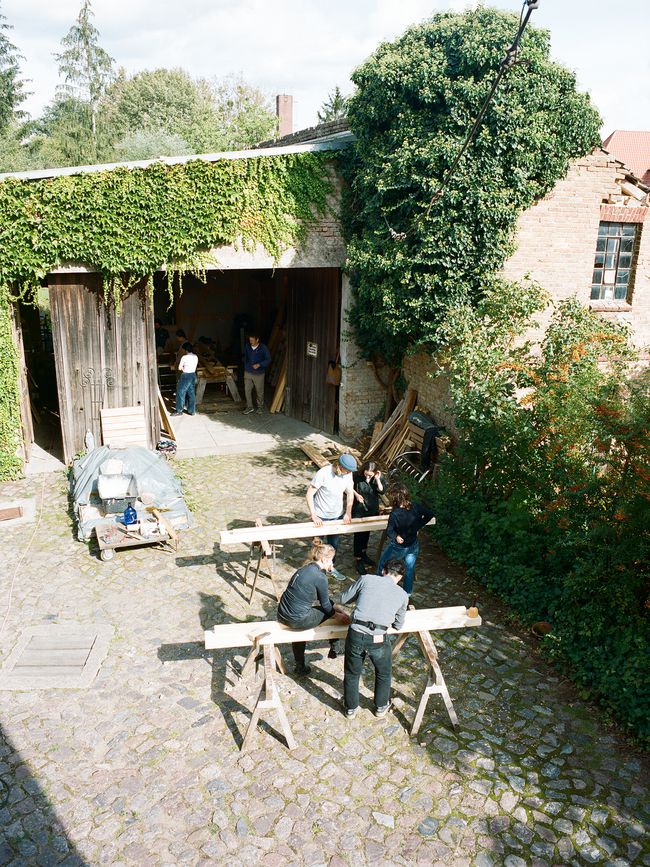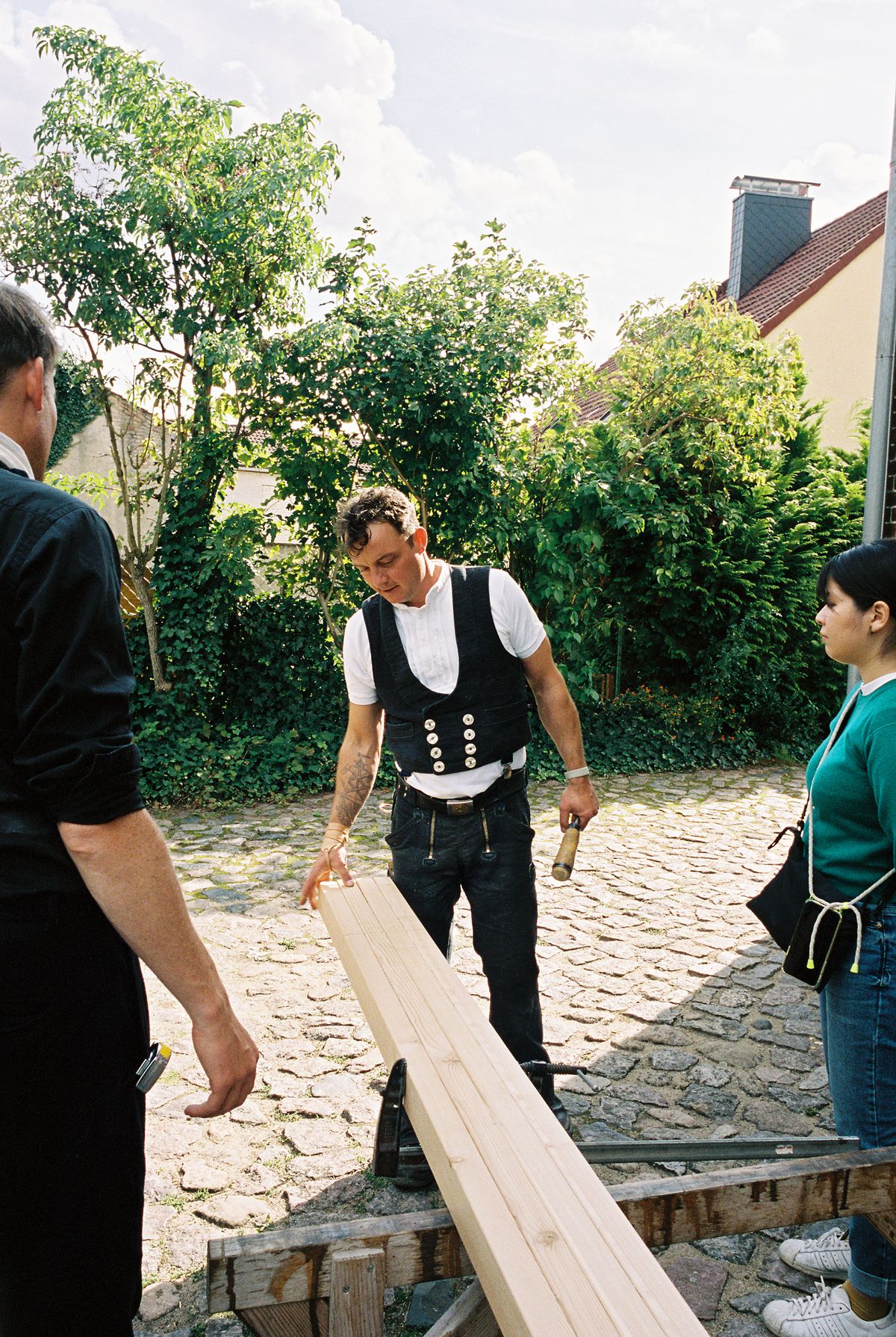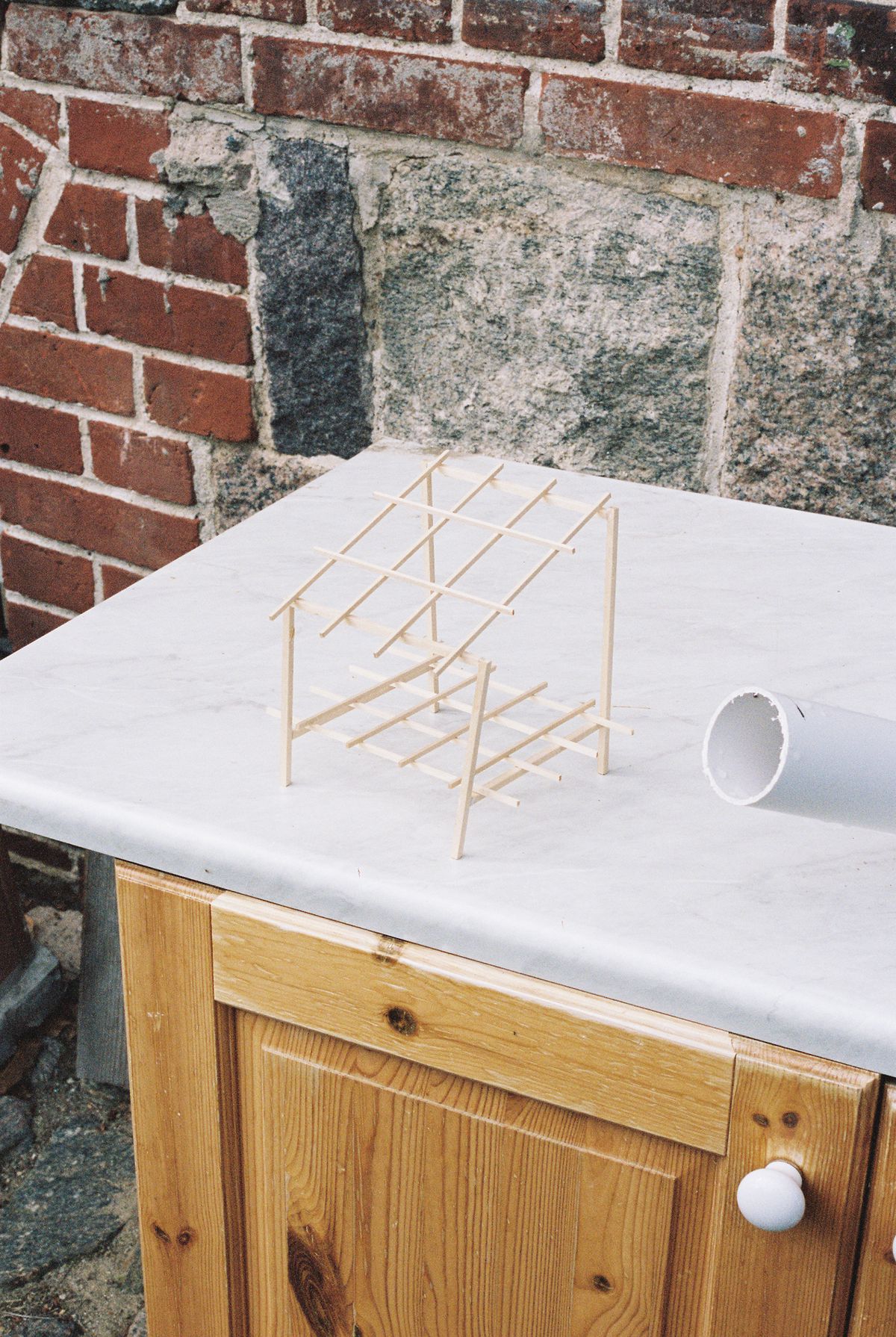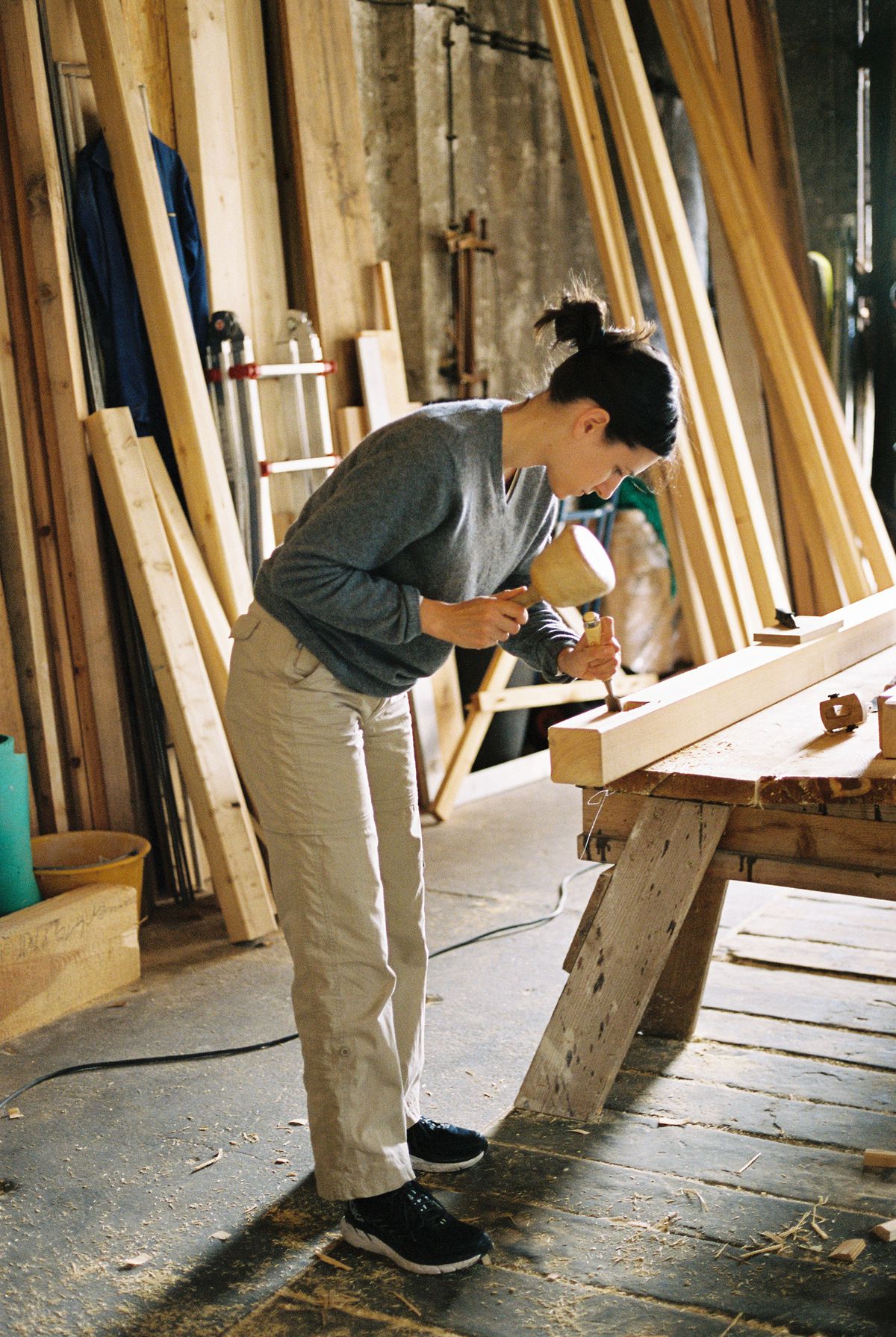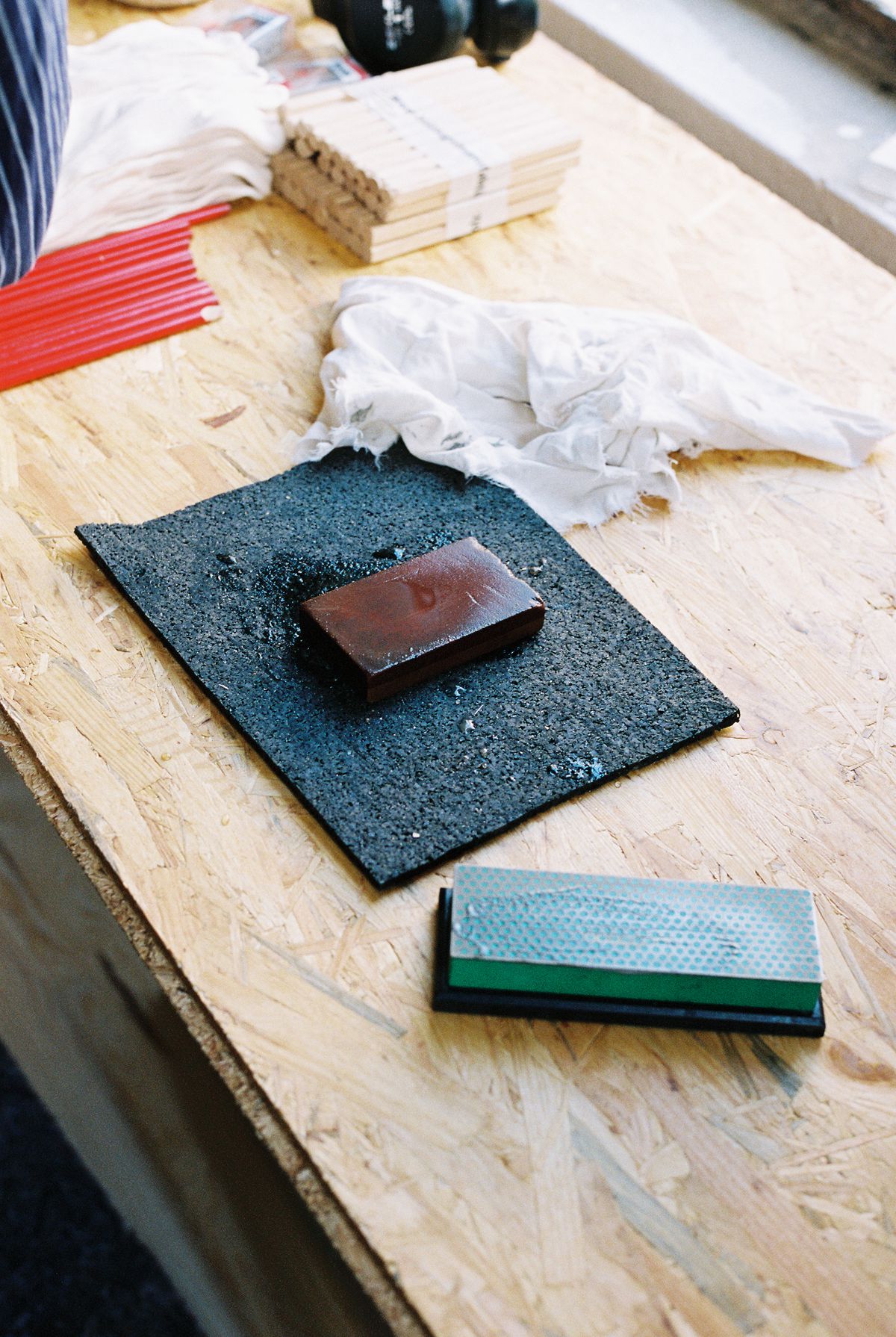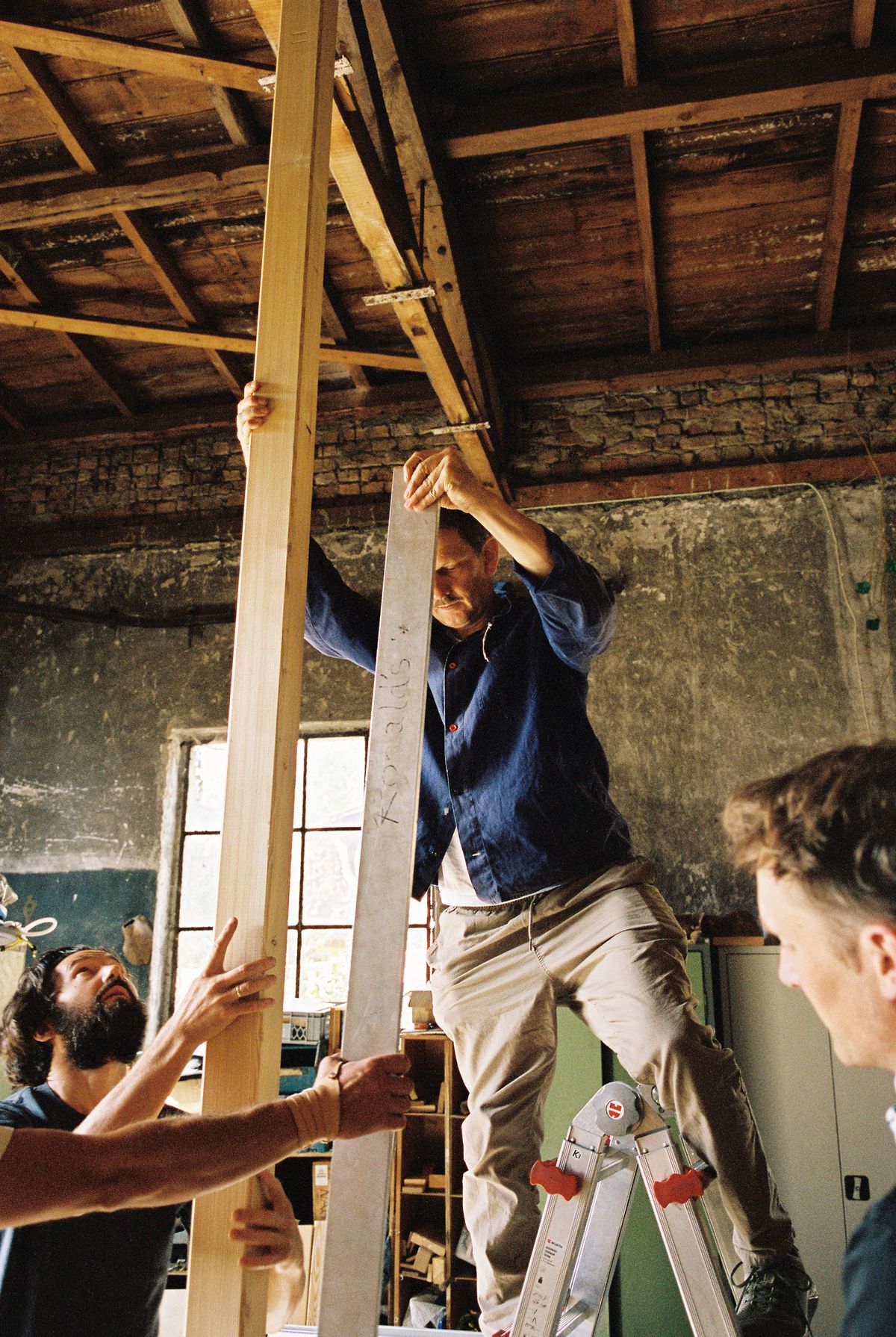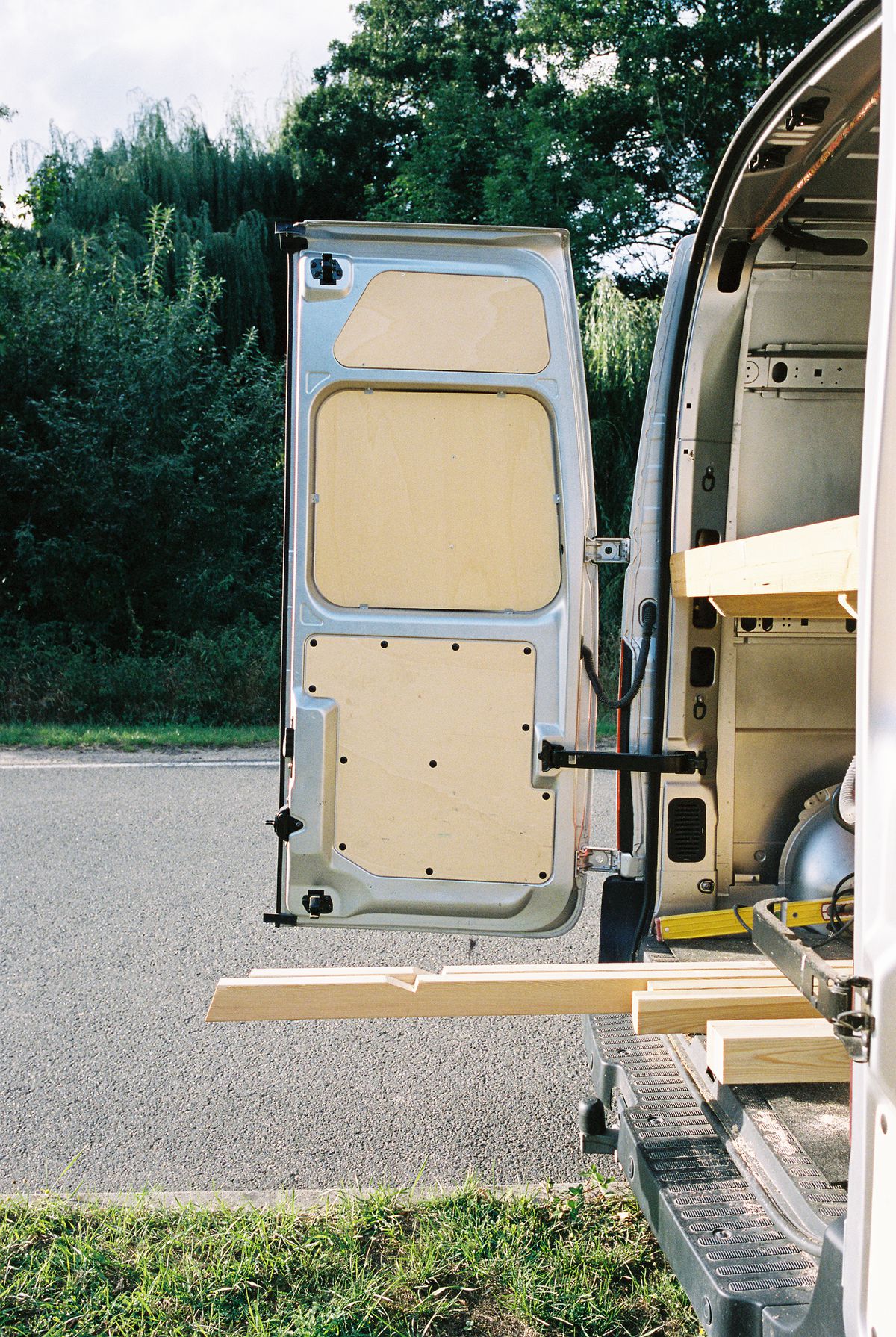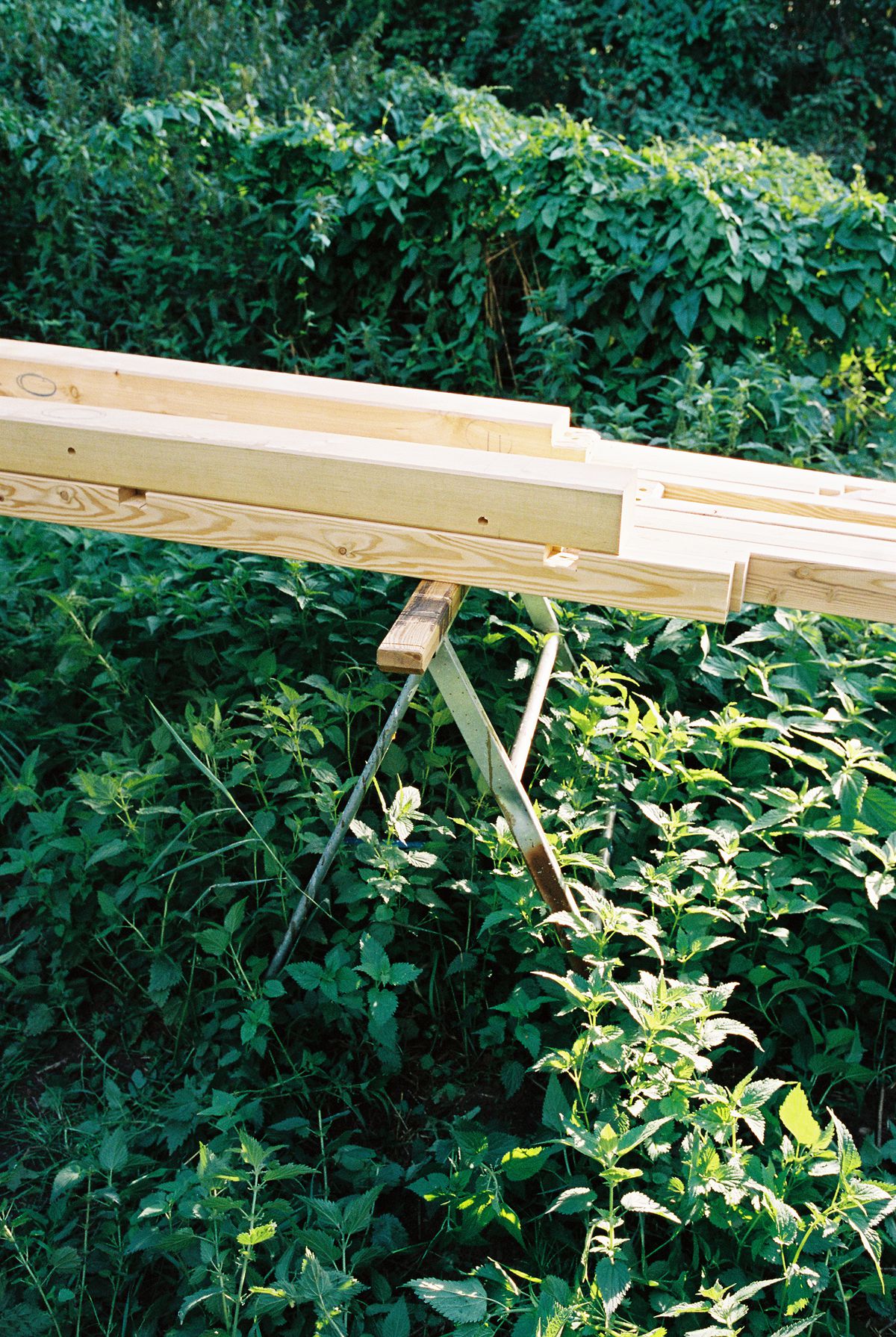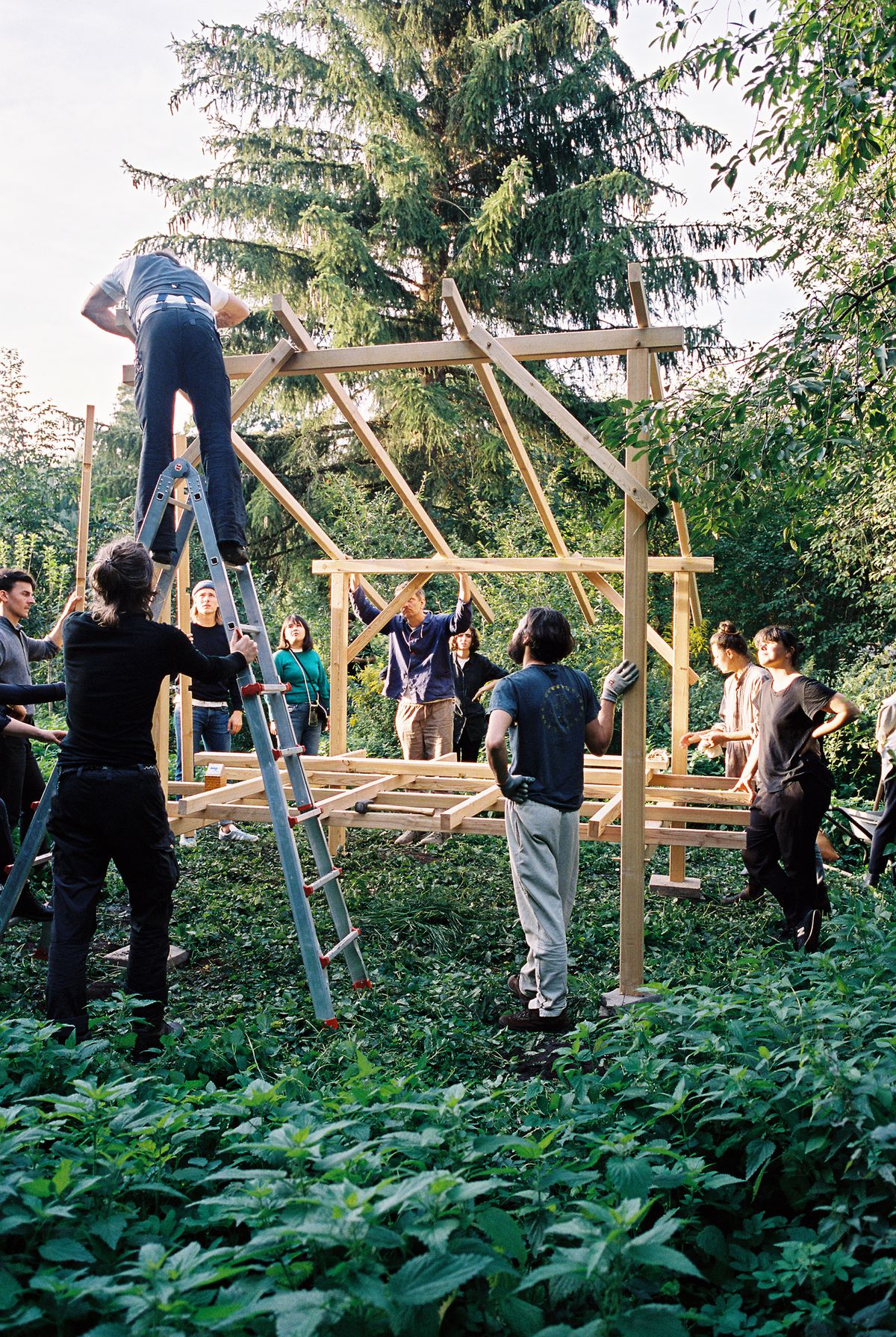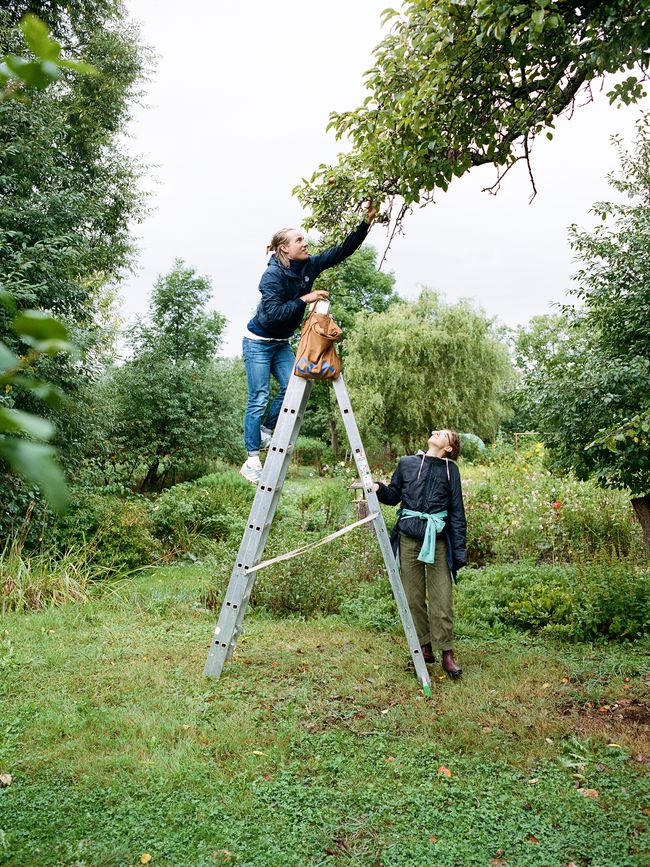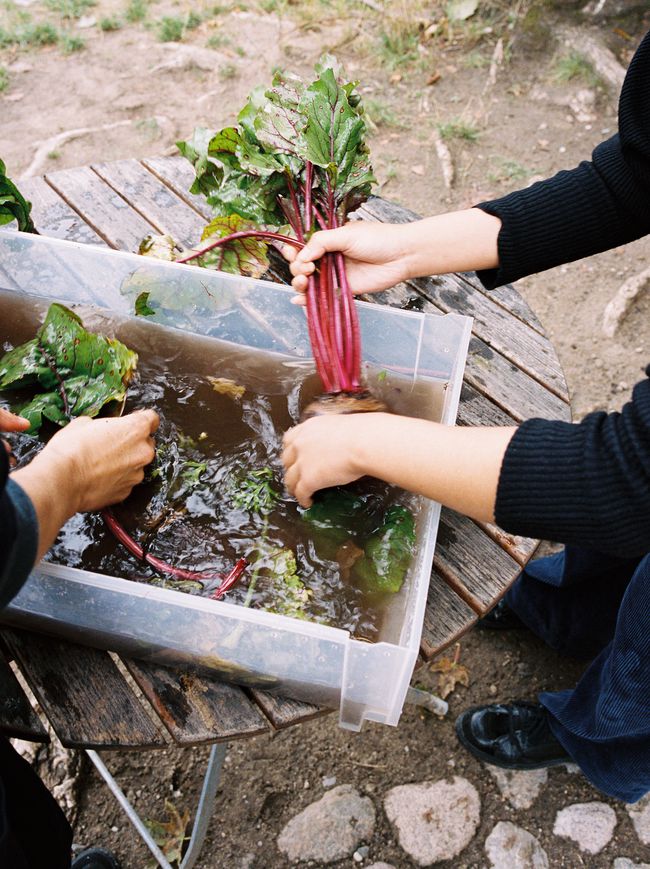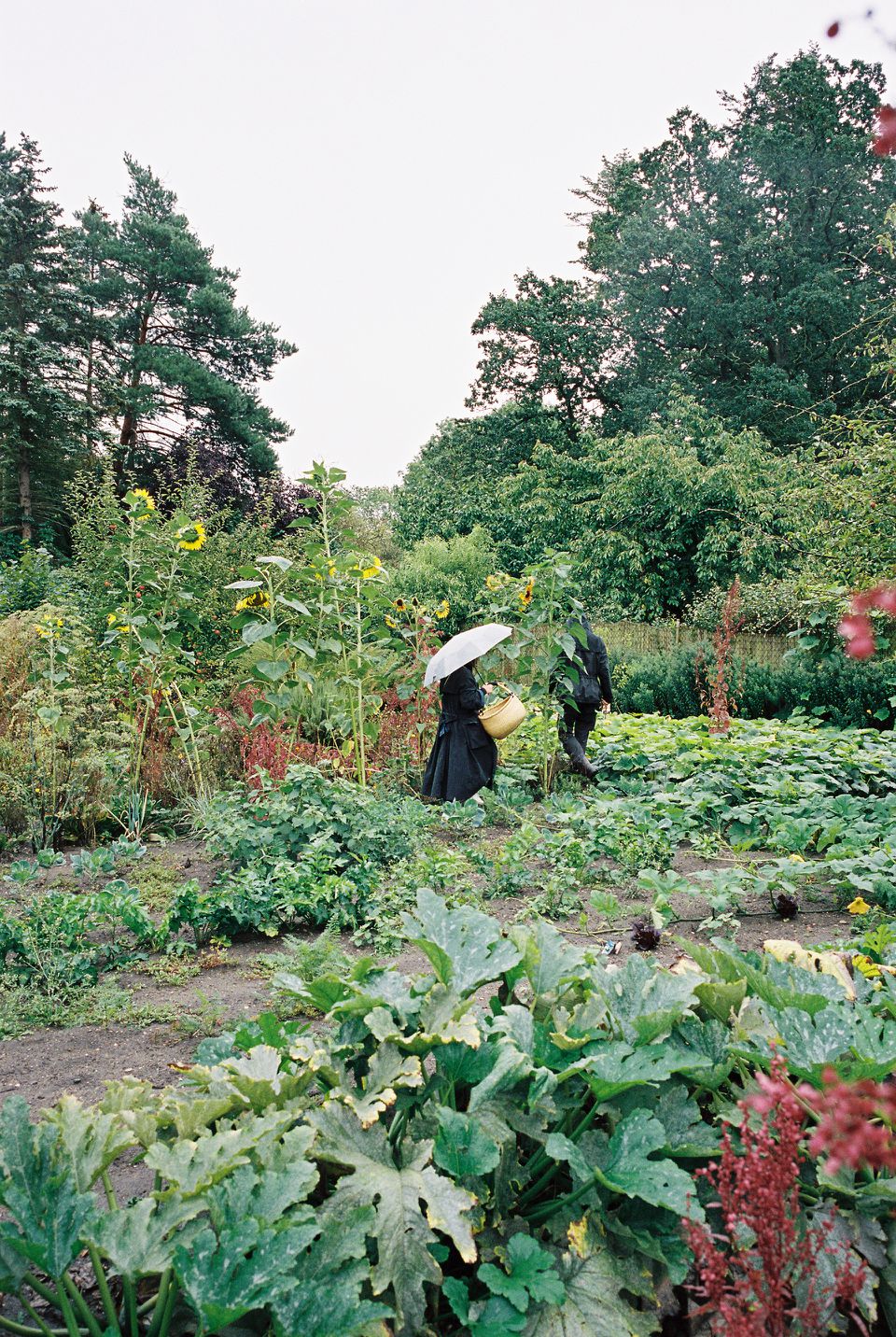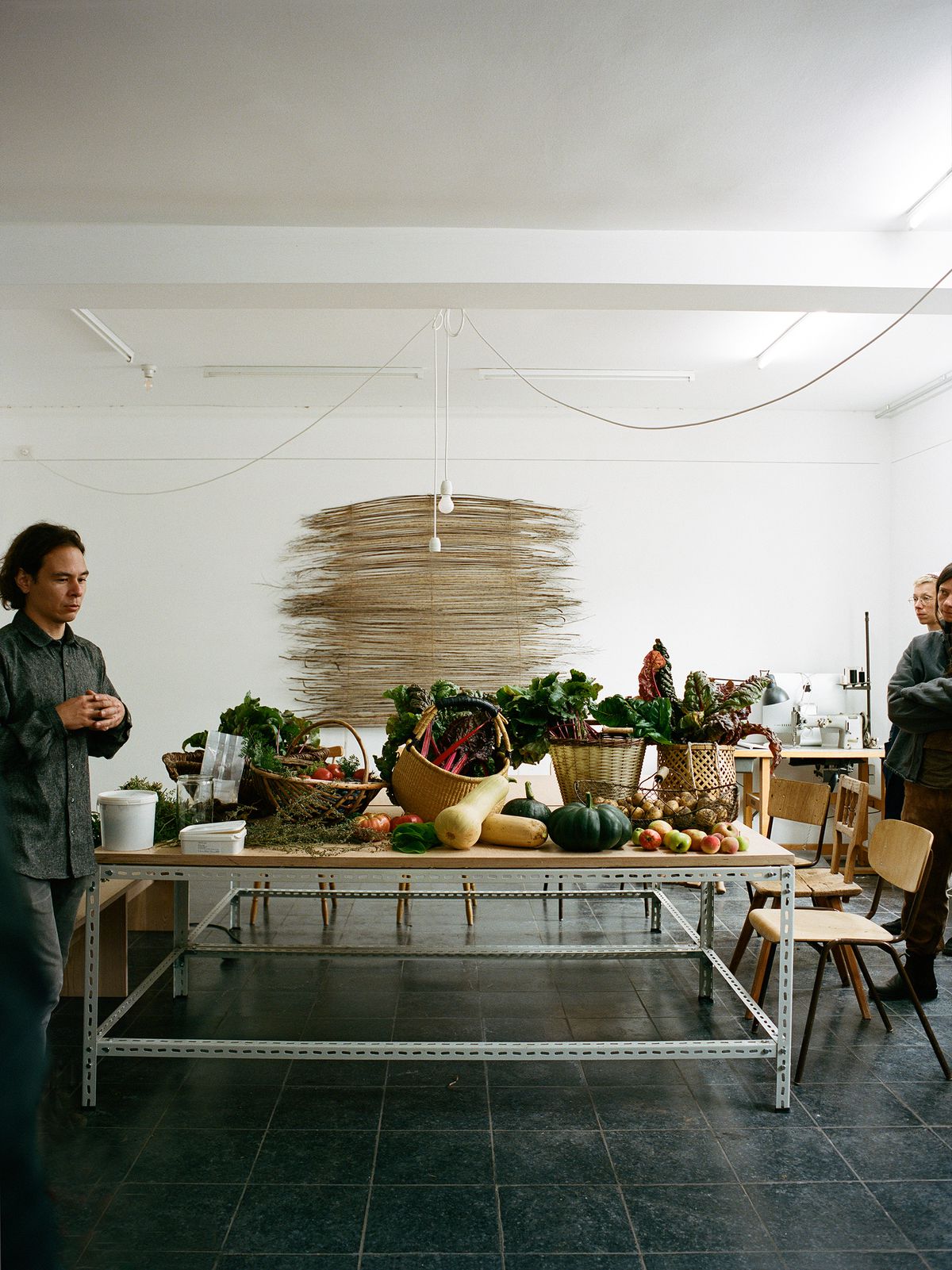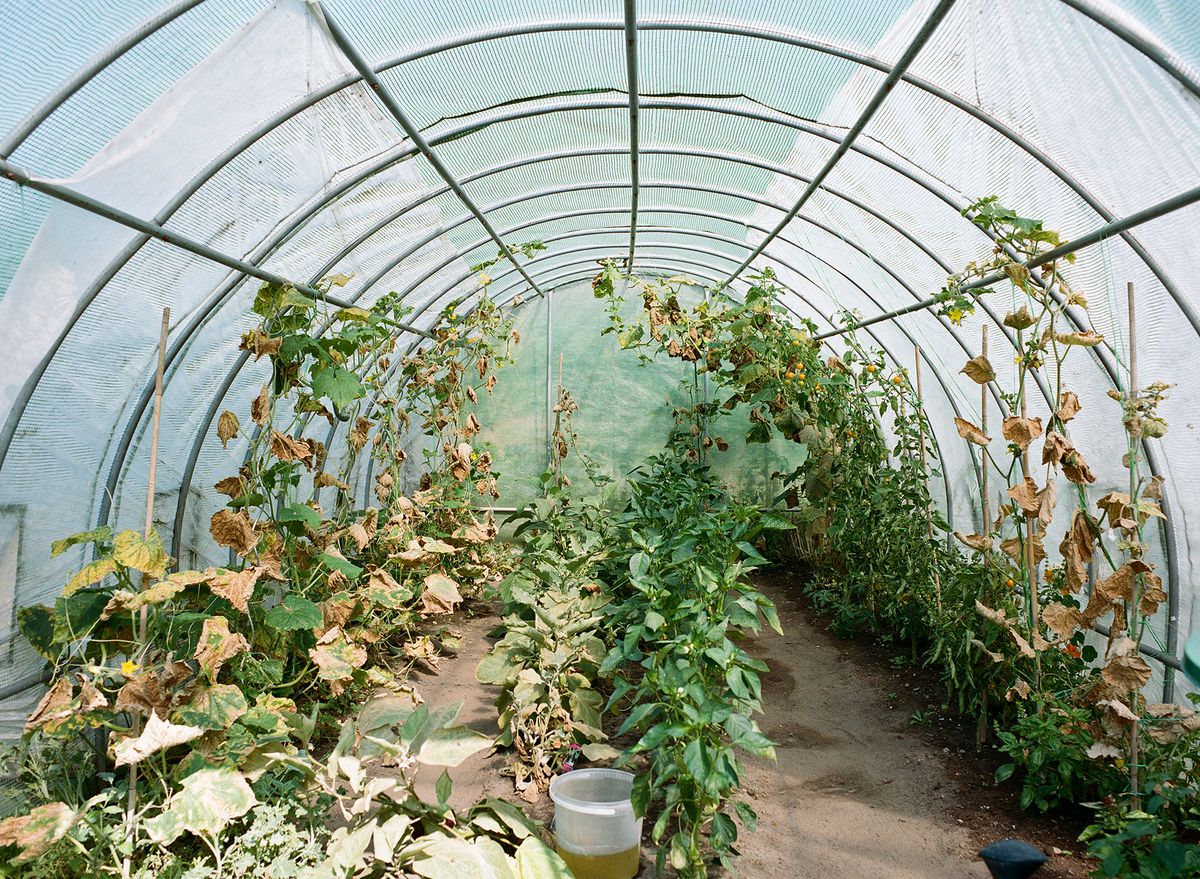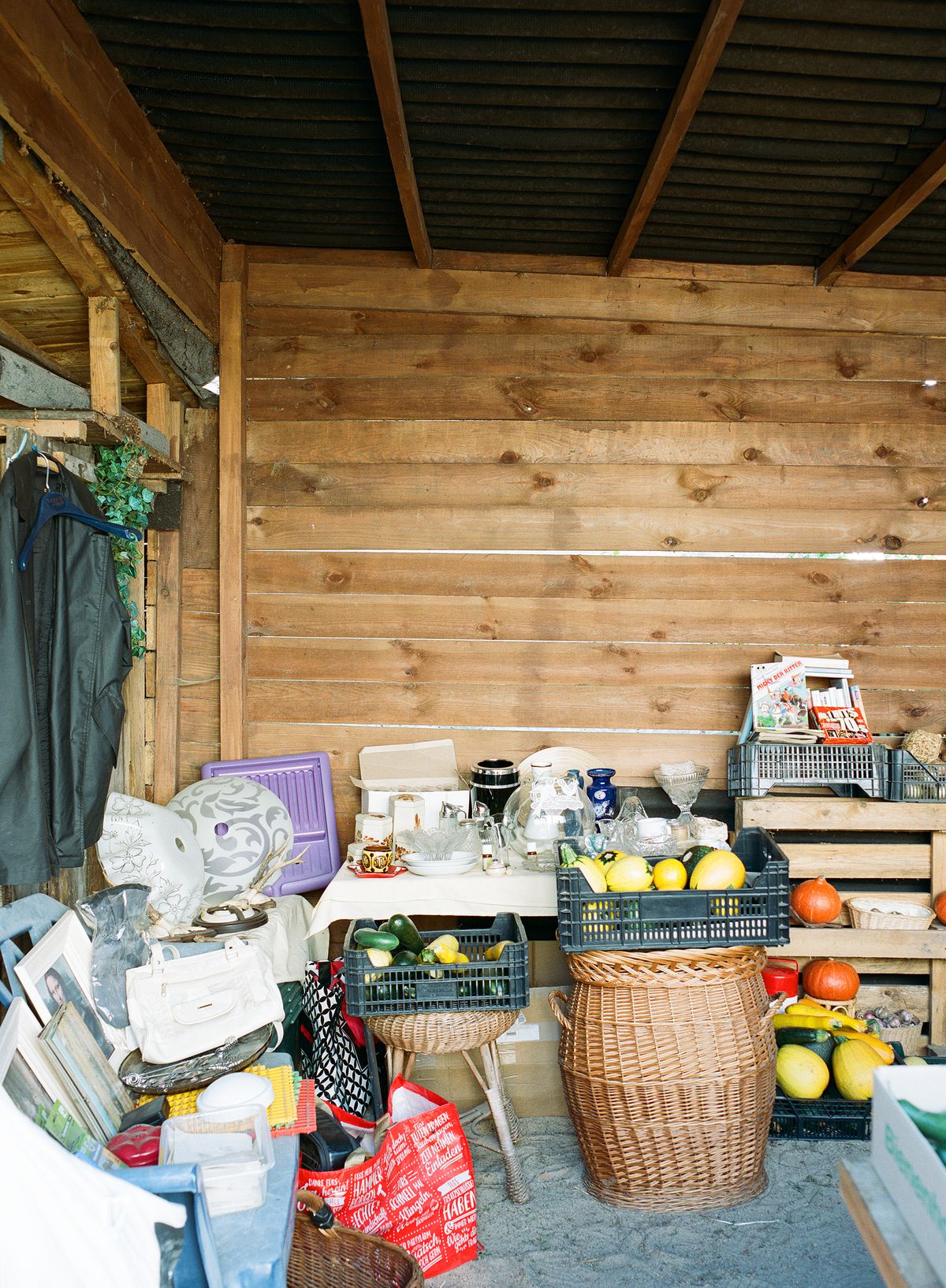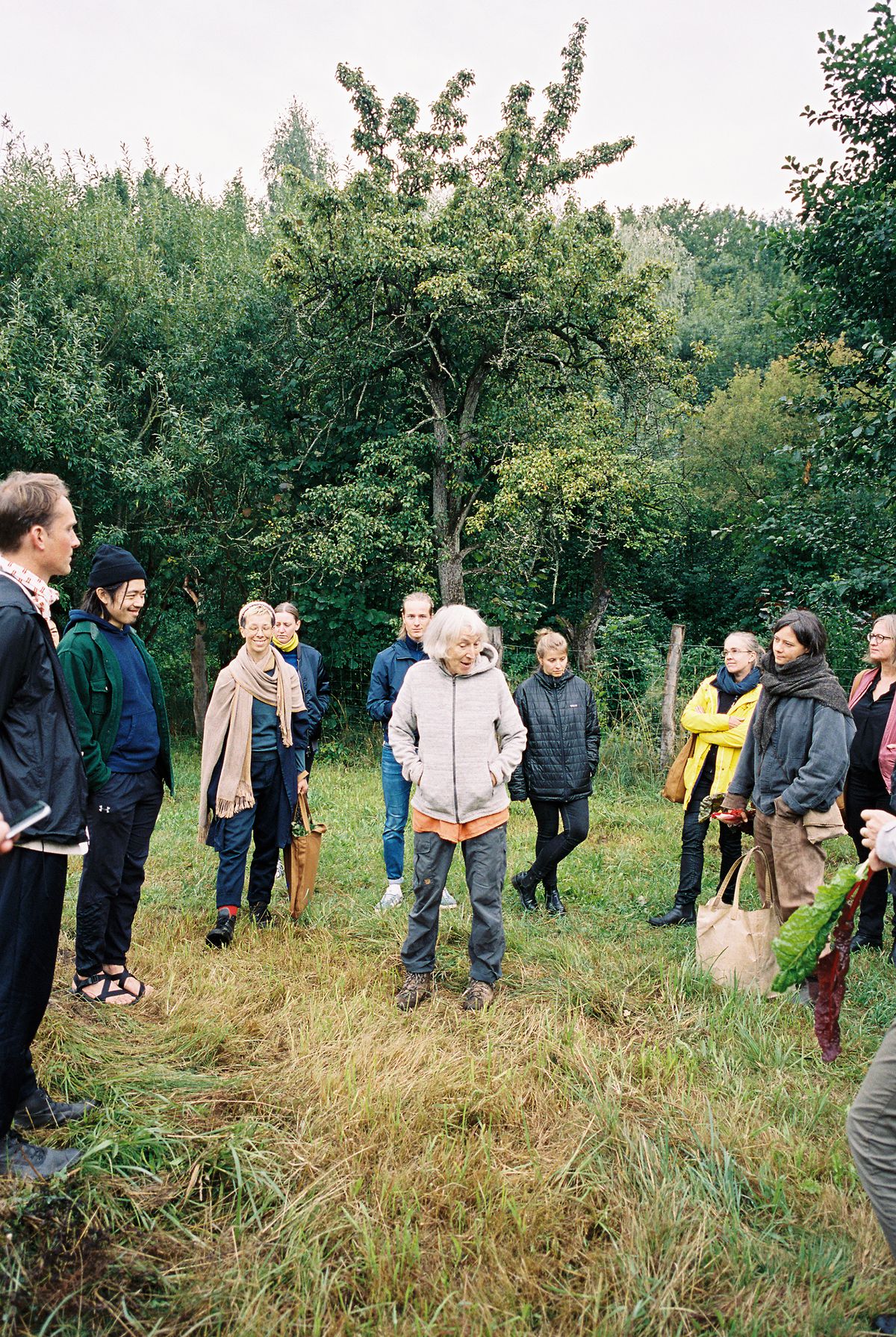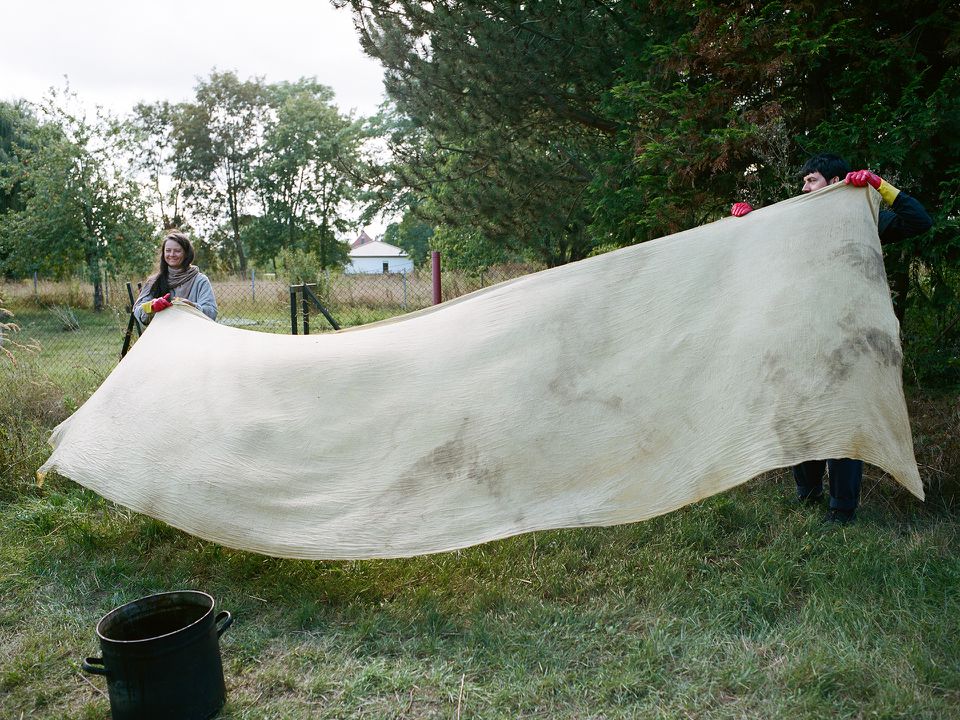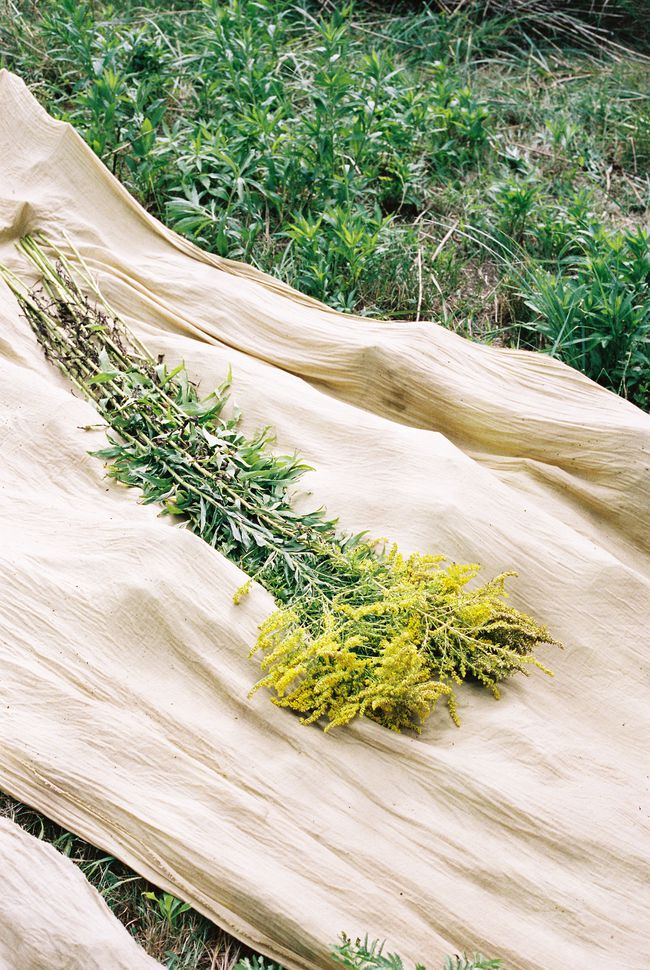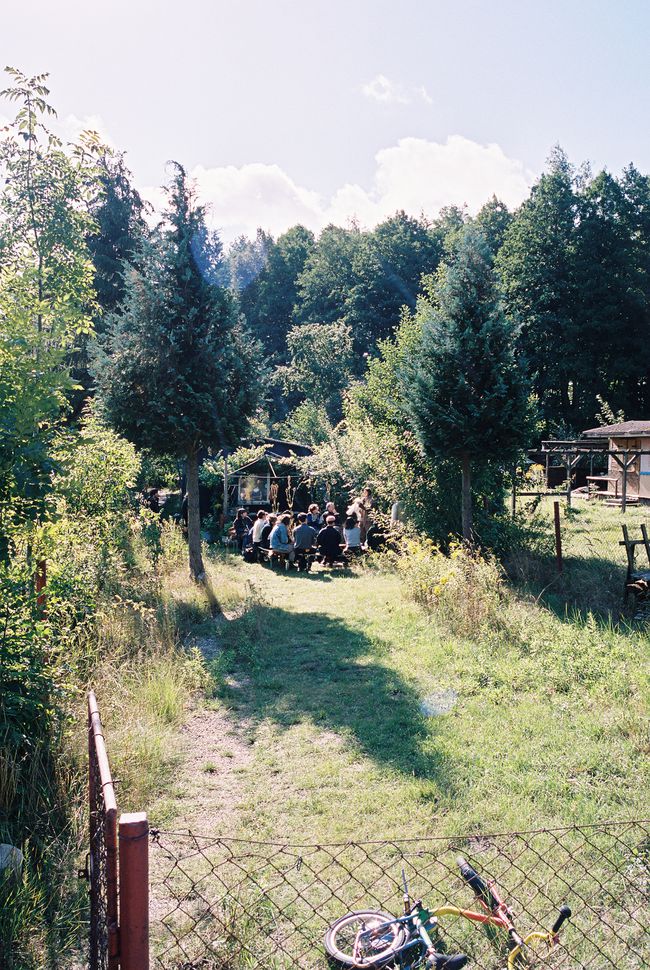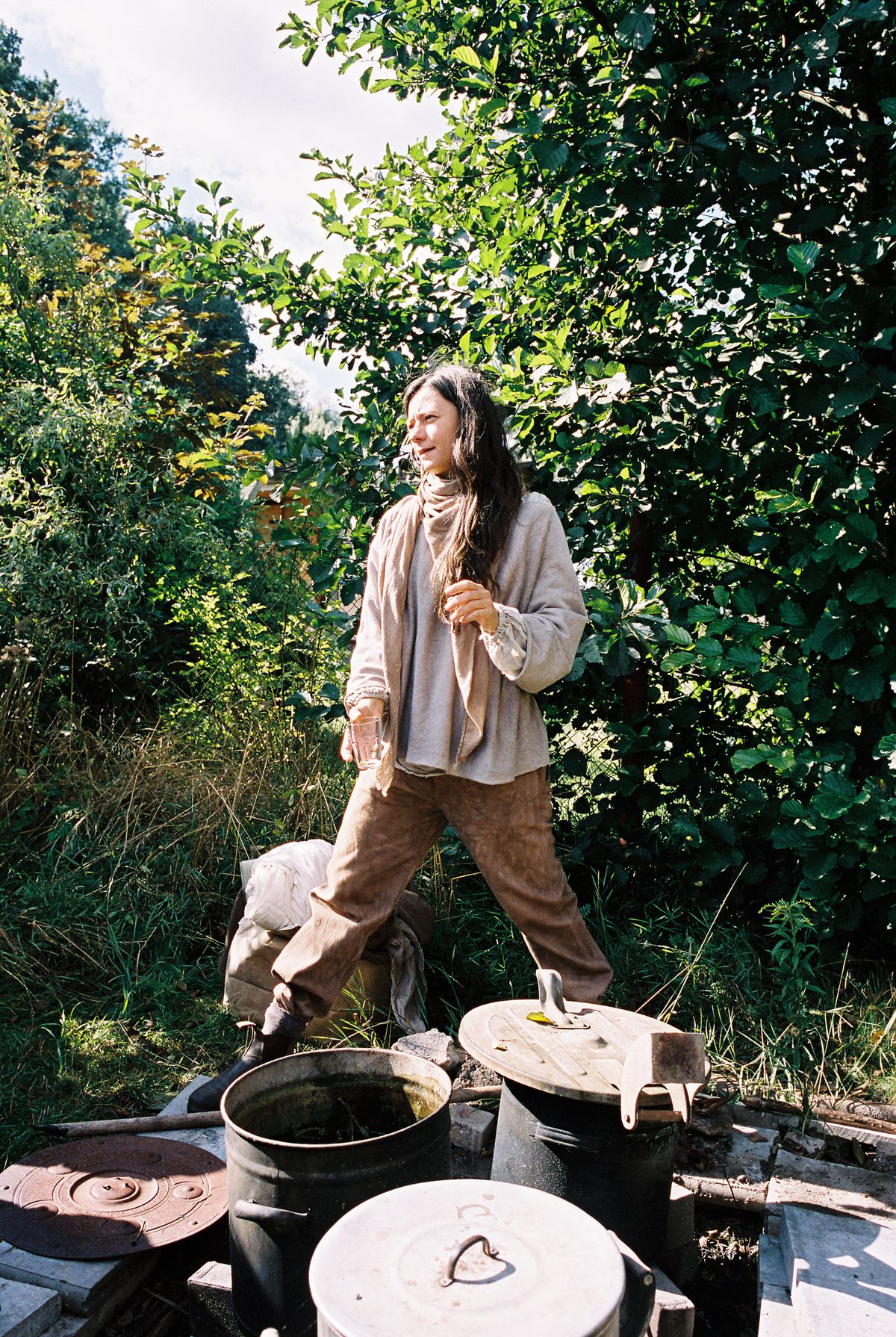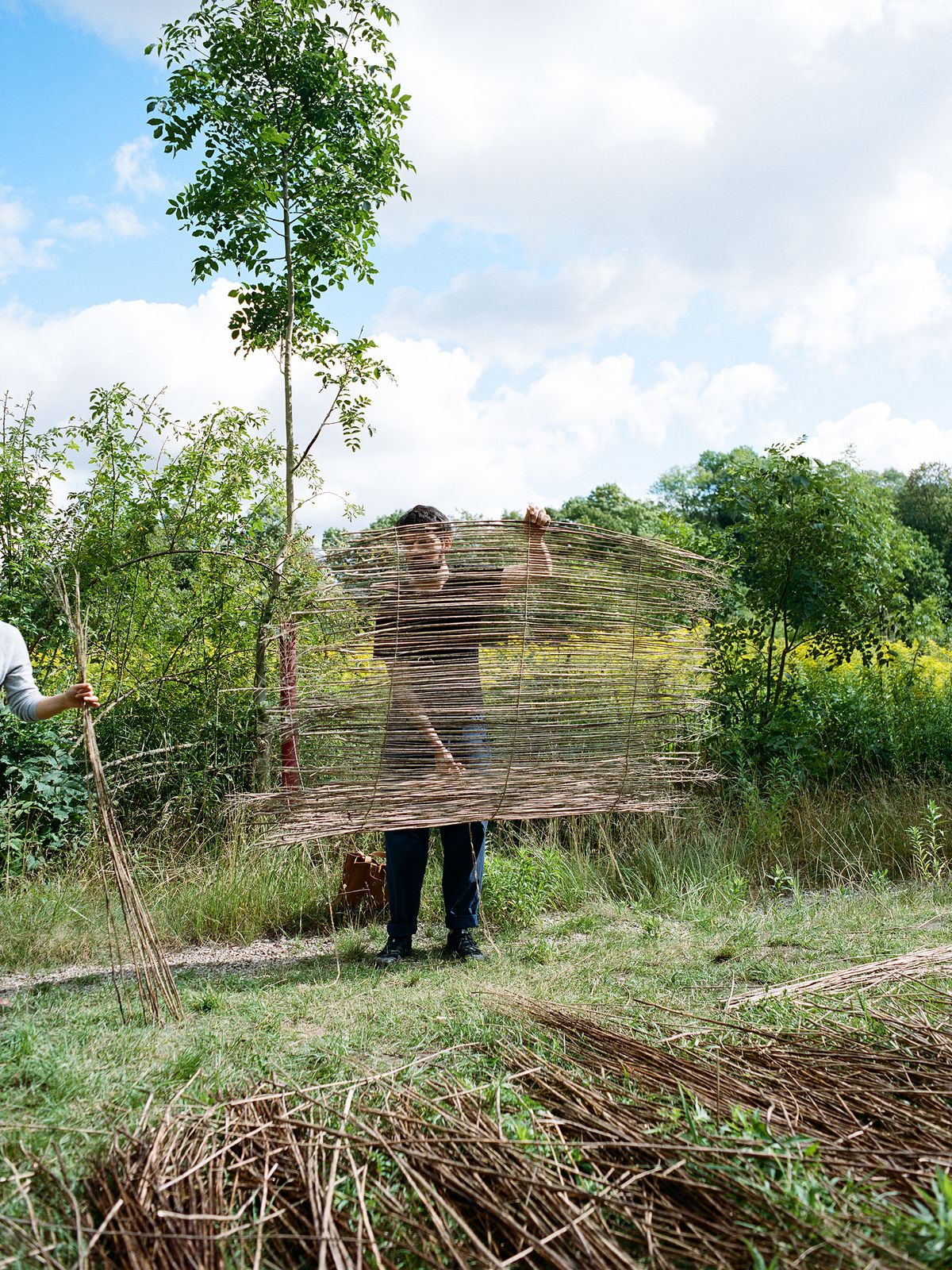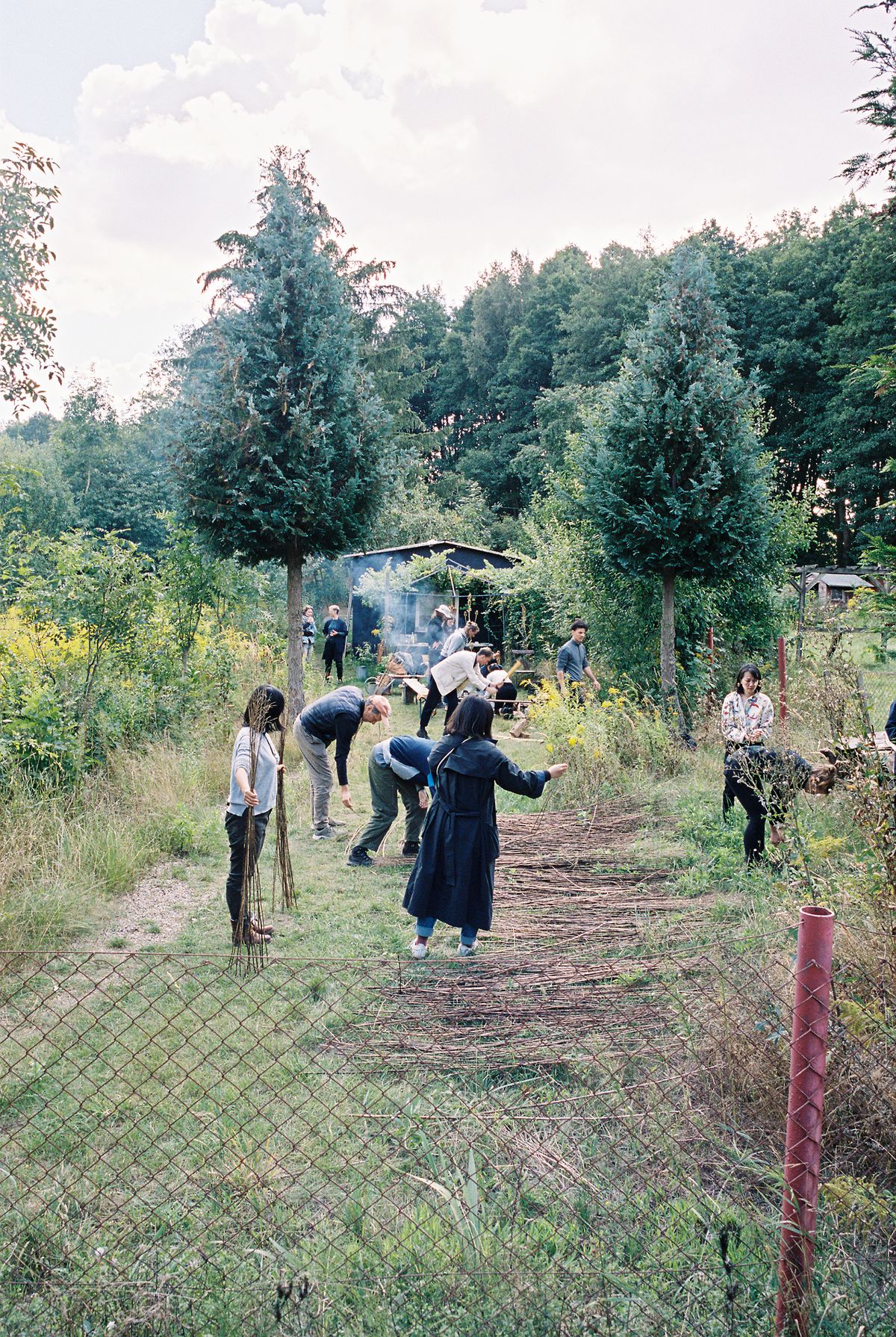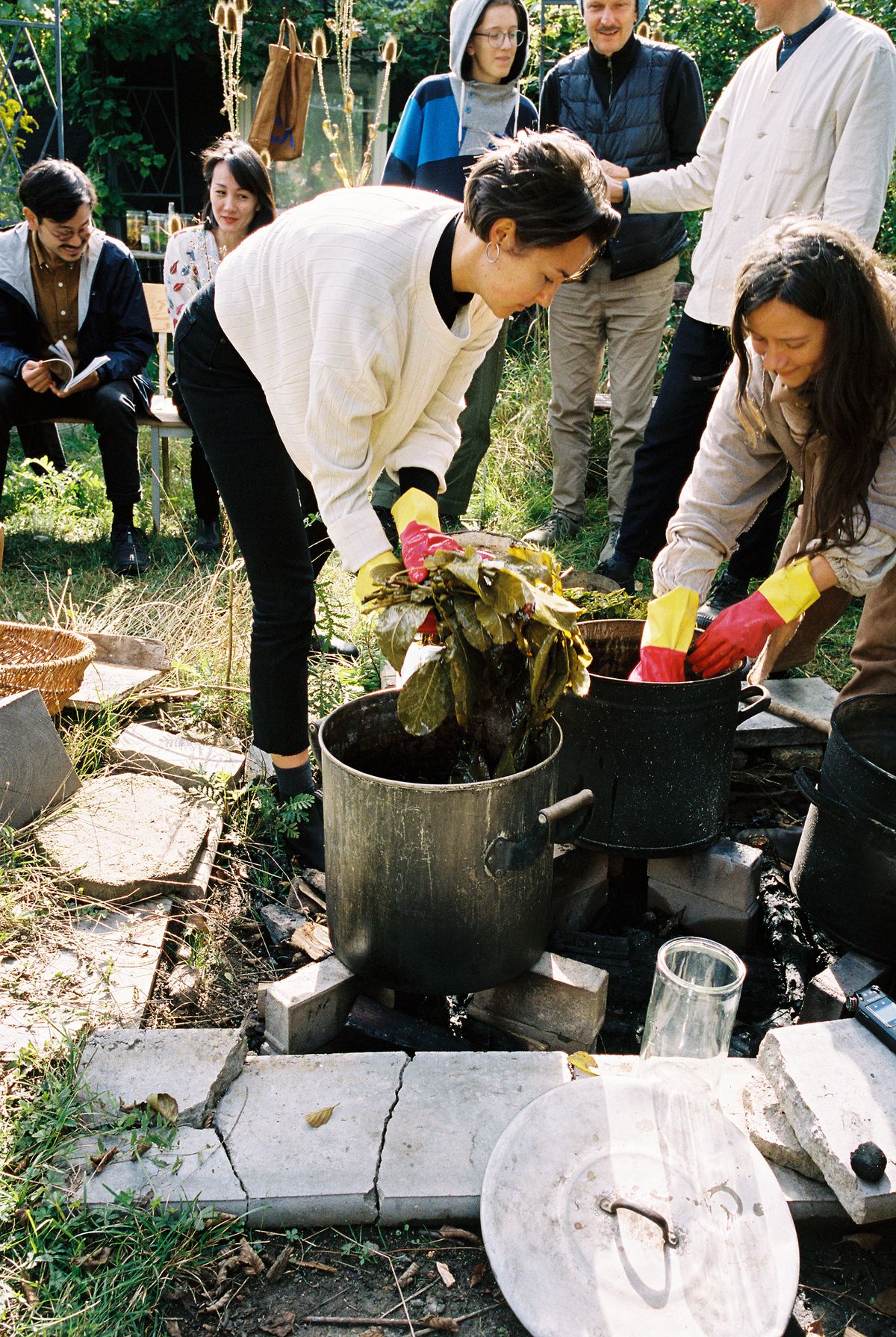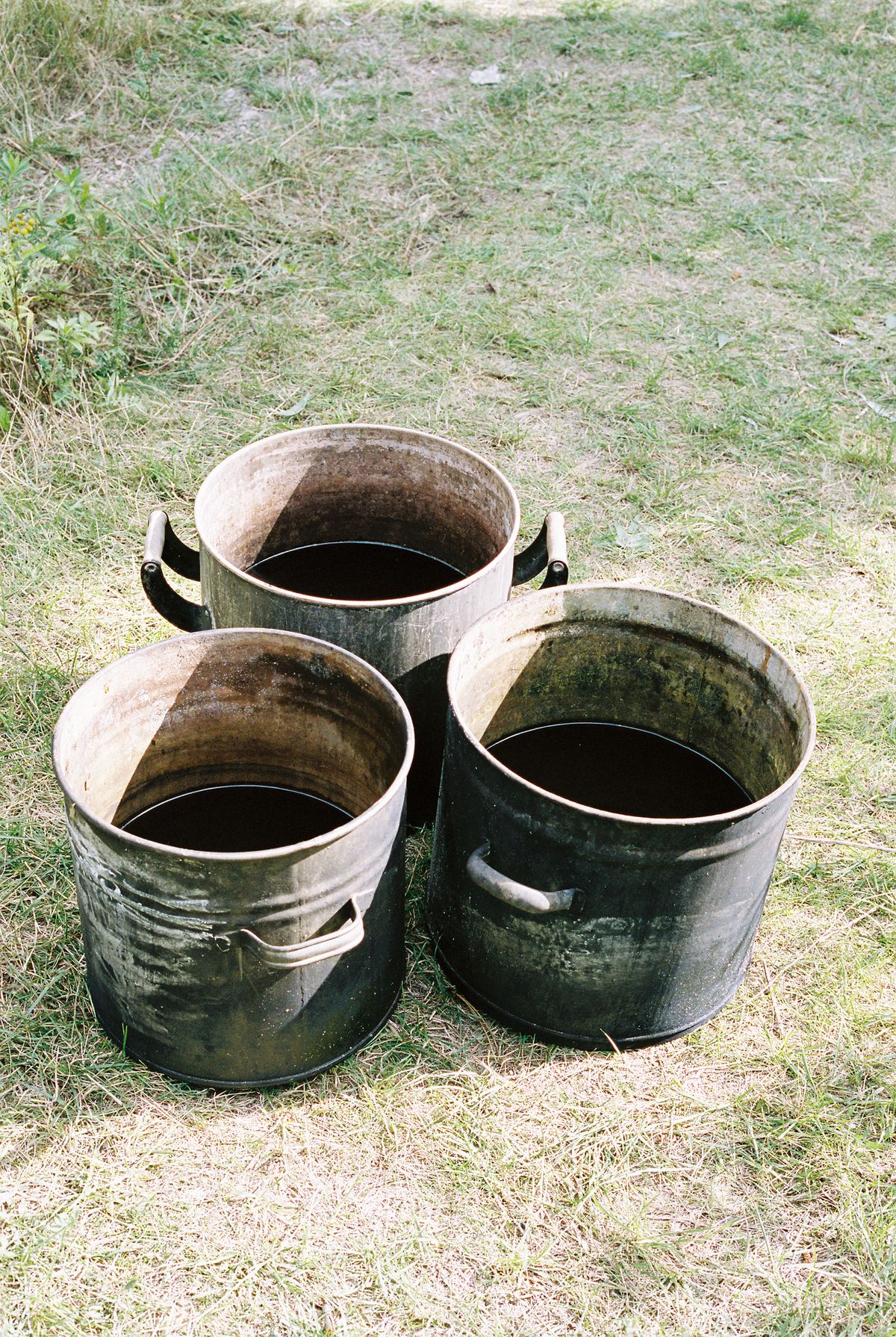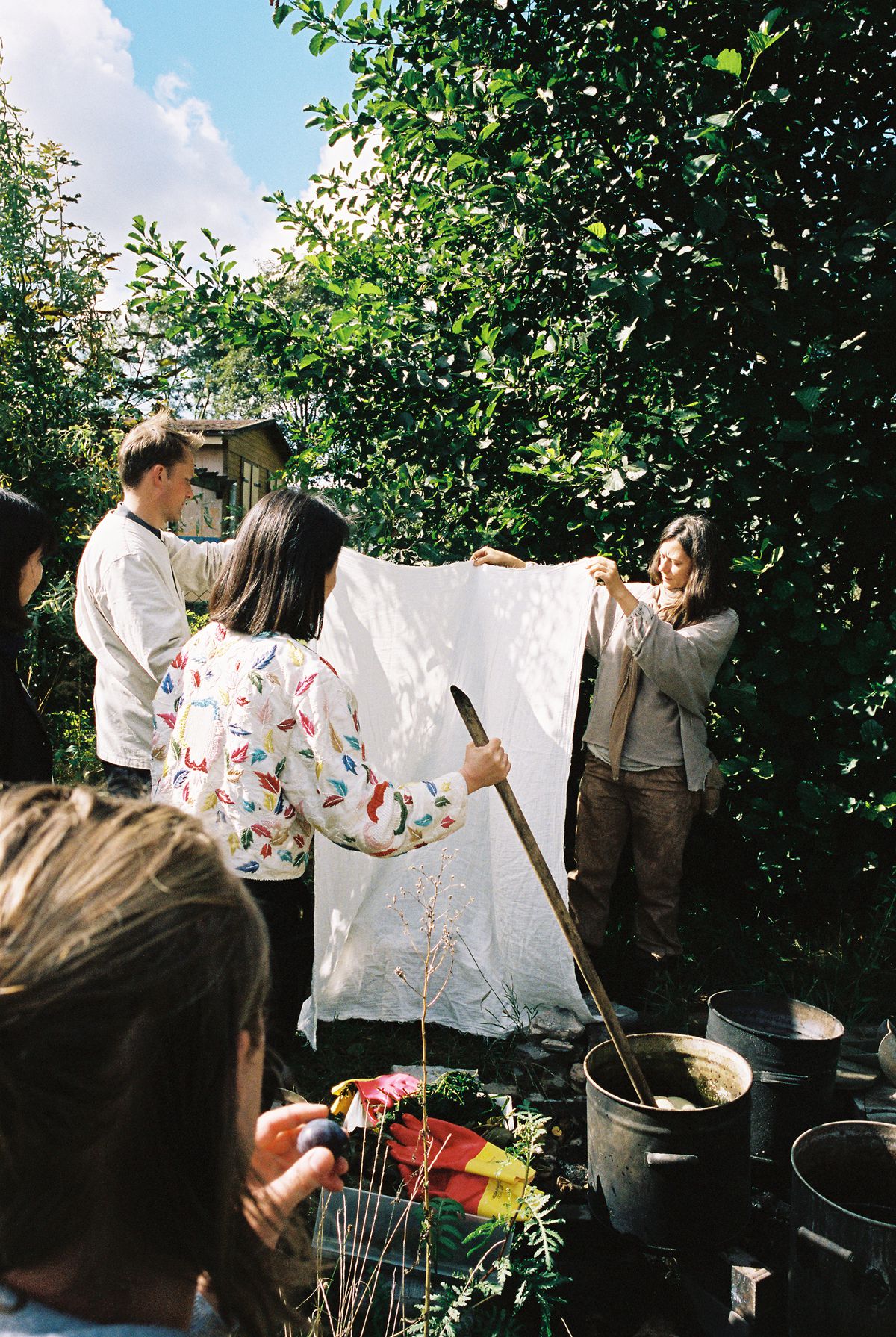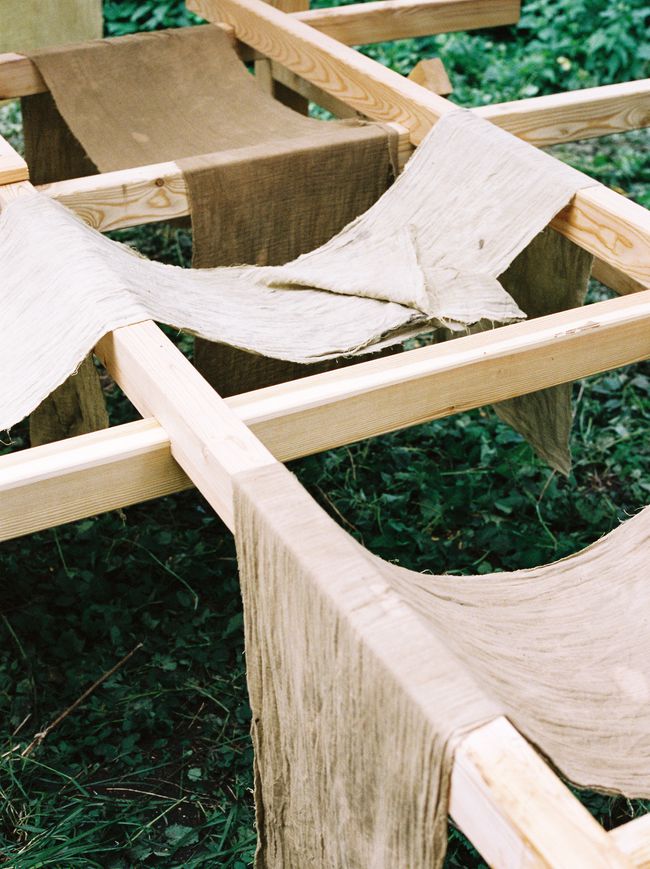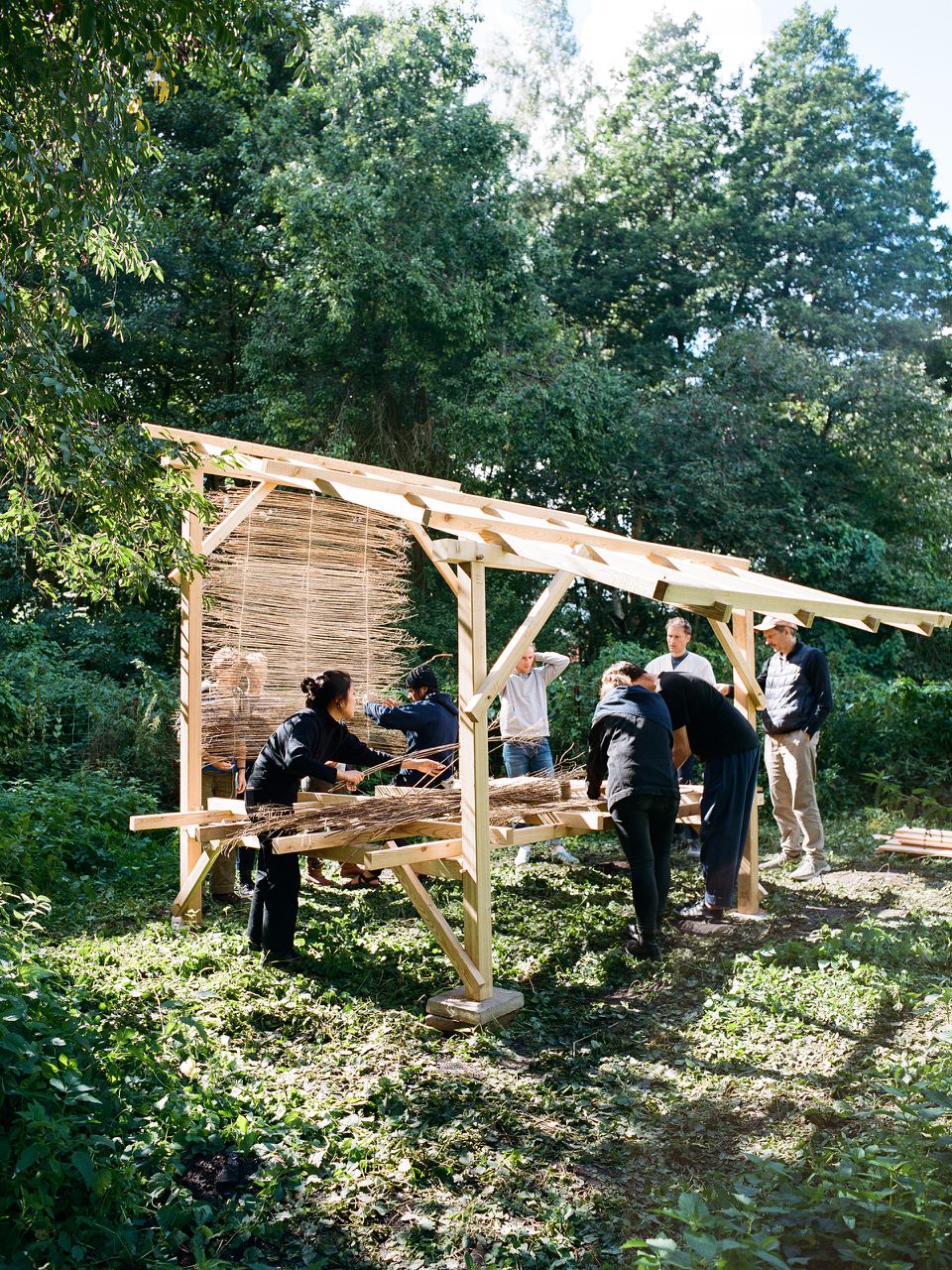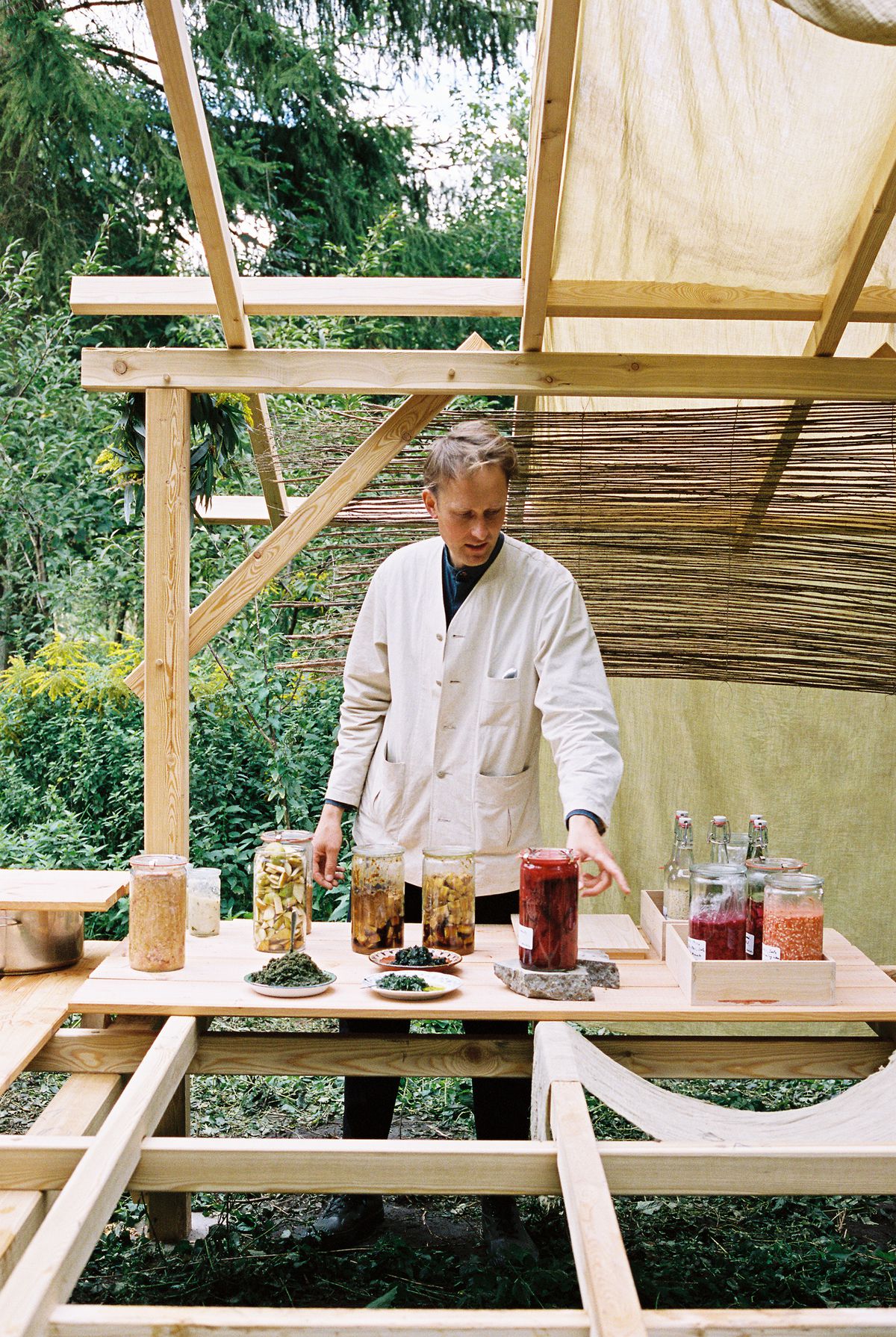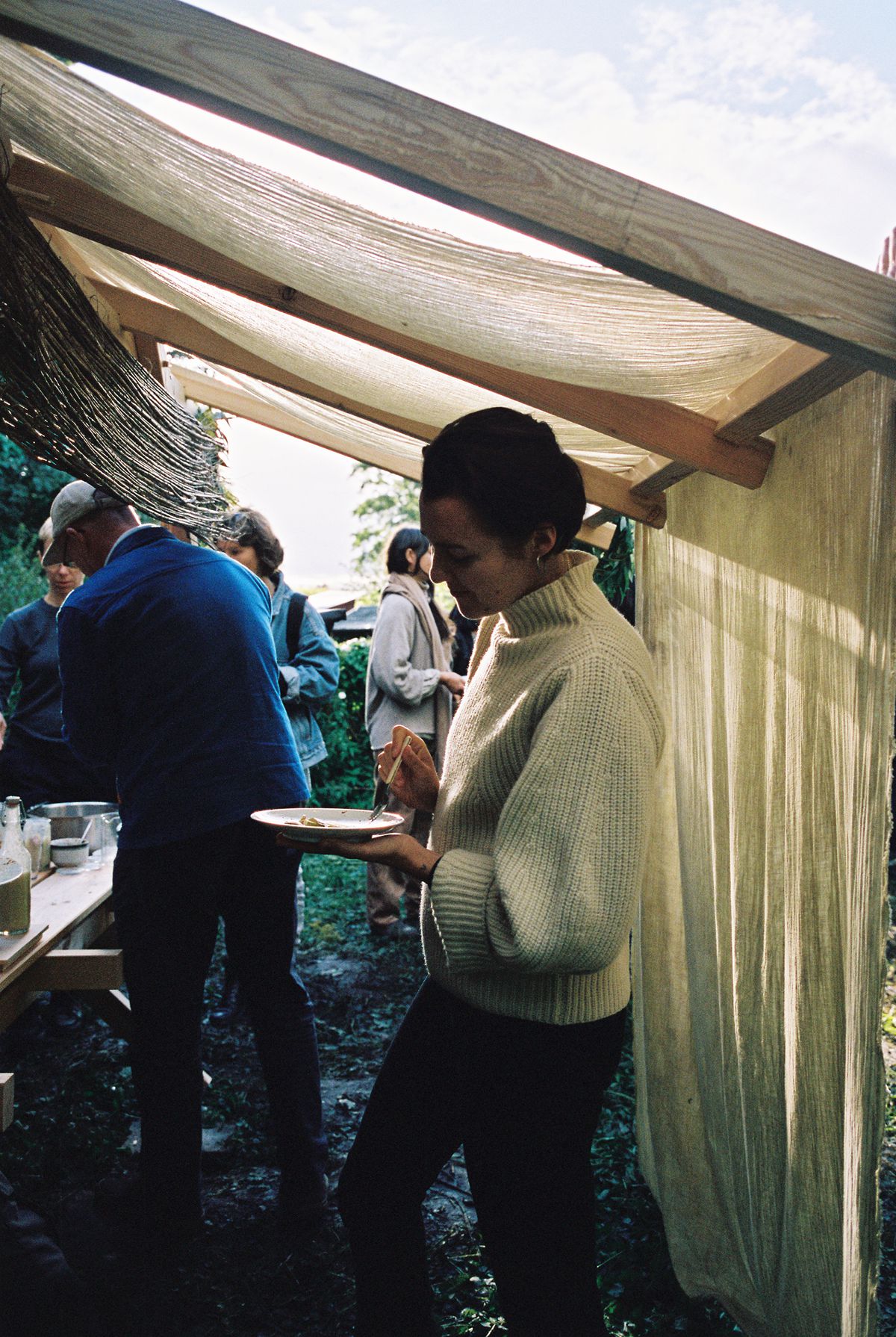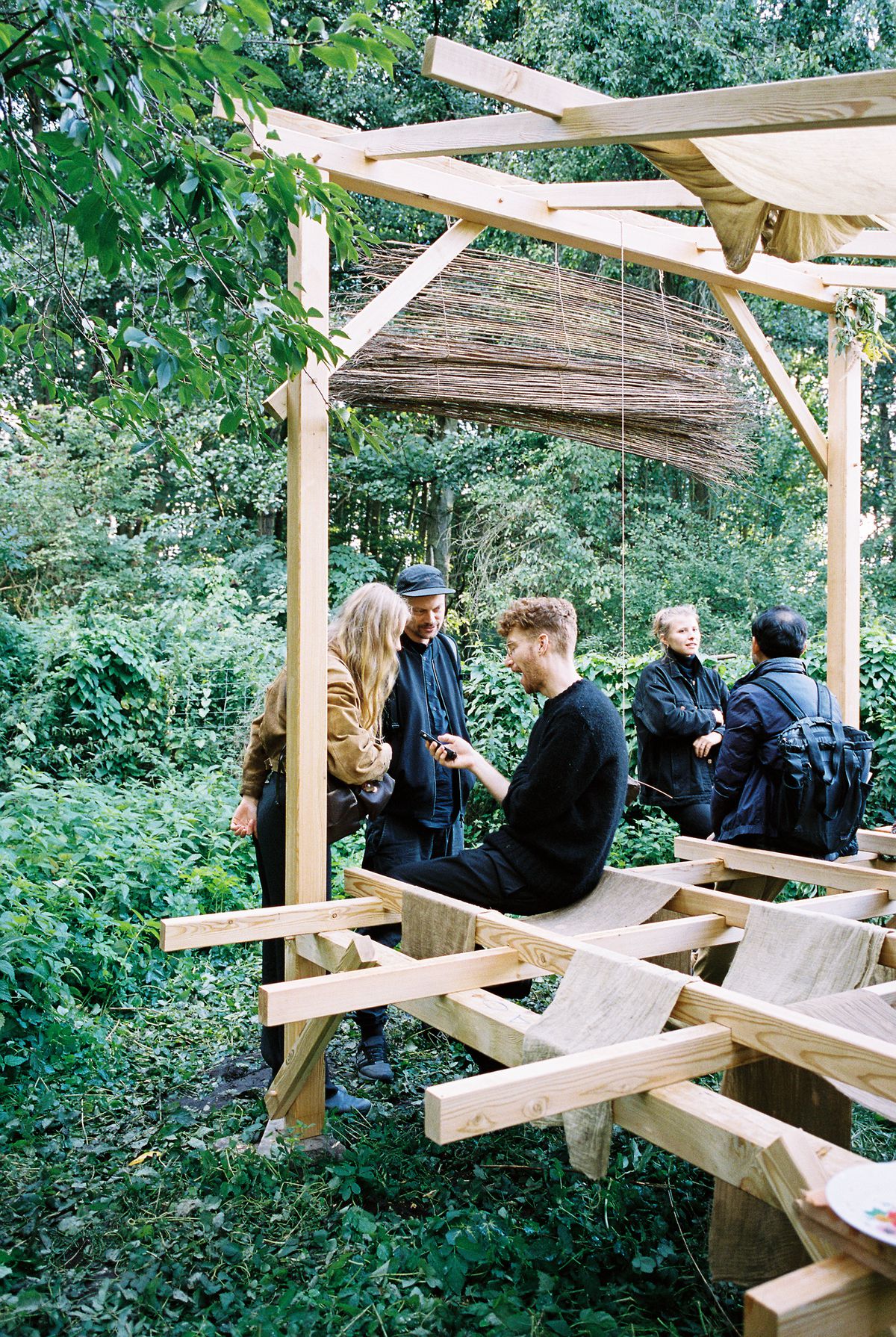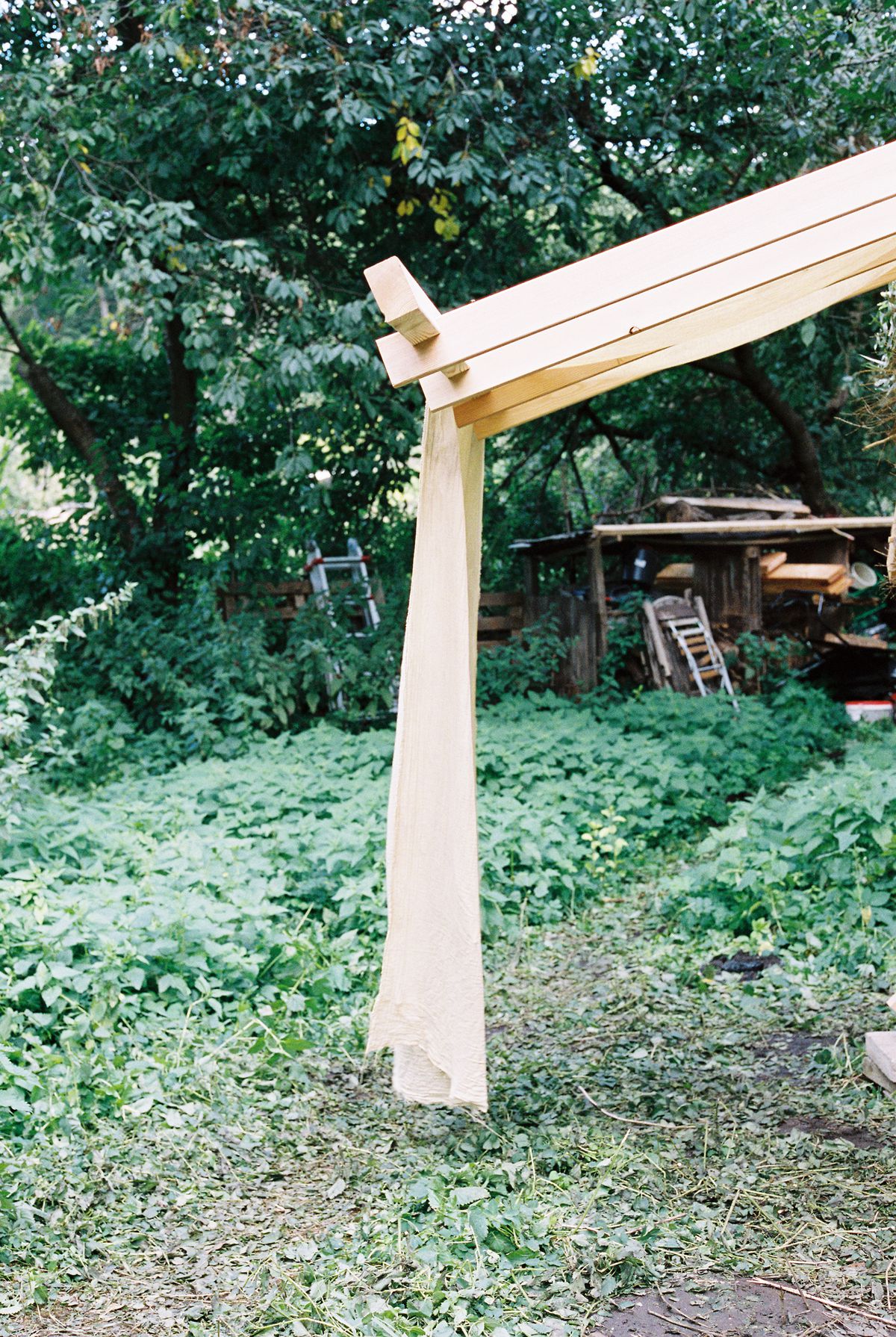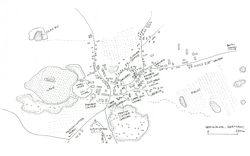Countryside Narrative
Niklas Fanelsa reports on a three-day workshop
Countryside narratives are often determined by people from cities who see possibilities of leisure and romance in the rural. In other words, the countryside serves needs and is understood through perspectives that are formulated in the city. But the countryside provides an important counterpoint to urban life, and when we limit ourselves to our points of view, we lose the potential for the rural to become truly meaningful to us.
Patterns of Rural Commoning is a series of workshops, with each workshop rooted in a specific location, a local framework, and a network of people. It aims to develop an understanding of the countryside from within. The first workshop series in Gerswalde, Germany, was made possible through the generosity of its inhabitants and local activists. They opened their gardens, workshops, and homes to us and shared their resources of knowledge, place, and material.
The workshop series makes rural life visible and legible to its participants from the city and is an invitation to engage with this local context. Through the activity of the workshop, you cannot remain distanced as a passive observer.
Day One: Constructing the primary structure
10am
To reach Gerswalde, there are different modes of transportation of various speed. Some of us take the convenient car, others pair the train with a bike ride, and some prove that a hike from the nearest train station is a worthwhile experience of one of the least populated areas of East Germany. We all arrive in the village centre and gather outside the project space Löwen.haus. The space’s initiator, Jan Lindenberg, who moved to Gerswalde three years ago, introduces the multi-purpose space which houses a café, a small exhibition and meeting space, a workshop for events focused around regional crafts and products, and a small printing company where he produces flyers and posters for initiatives and artists in the area. We are here to begin a series of workshops that will take place over the next three days. Each day is dedicated to one theme: craft, food, and material, with a summarizing event on the last day.
11am
We walk to the workshop of Ronald Klemmer, a master carpenter and restorer, who moved to Gerswalde from a nearby village. He renovated the former bus garage of the old village post office, where he now lives with his girlfriend and mother-in-law. He explains his practice of restoring existing wood structures and building new structures in close communication with his clients and architects. He also tells us about his education and journeyman years, when every carpenter in Germany travels for three years and one day, after their traineeship in their hometown. In this way, all carpenters first learn their local tradition and craft and then experience different methods of construction on buildings sites further afield. In Ronald’s case, he even travelled to the UK and India to learn specific techniques, material handling, and tools. In this way, he combines a local tradition with his international experiences.
When entering the workshop space, we see a fragile wood maquette next to a large pile of wooden beams. For this first day centred around craft, the ambition is to build this structure at full scale in wood, using hand tools to produce traditional local joinery without the use of screws or nails. Ronald shows us how to sharpen and care for the tools that we will use. Then, in four small groups, we continue to work in the workshop and its exterior space. We prepare mortise and tenon joints for the main structure with chisels and hammers. Others cut notches into lighter wooden beams for the floor and roof grid using hand saws.
Once built, the wood structure will be adapted and occupied by the next two workshops.
1pm
During lunch break, we all go for a stroll to the nearby Großer Garten, a former garden nursery that is now a cultural centre and seminar house. One building has been renovated as a guesthouse to accommodate most of us during these three days, and its terraced gardens serve others as a camping ground. The owners, Lola Randl and Philip Pfeiffer have also initiated two small restaurants to provide food to visitors from the area and Berlin. One of them is the Japanese-run Café zum Löwen, which will prepare our lunches and dinners for the next days.
2pm
After lunch, we return to Ronald’s workshop where we continue to work on the wooden joints. Some of the joints need to be cut in place, so the cooperation of three to four people is required. In the afternoon, some of us go to prepare the site at Kalklaube, a former garden, where the pavilion will be assembled. The front space has an open lawn next to a field of goldenrod. There is a small vegetable garden and a hut. We choose to place the structure in the very back of the garden, where it looks like a jungle. To determine an exact location, we each take the position of a corner of the new pavilion and, maintaining our distance, we move around to find a spot. We carry the small maquette with us to help visualize and confirm placement. Upon deciding, we first cut down an area of stinging nestles, keeping in mind that they could be used in the later workshops. For the foundation, we dig four small holes and fill them with forty-centimetre-wide concrete flagstones that were found in a nearby storage shelter, in which Jan keeps leftovers of all kinds. When we finish levelling the improvised foundation, the rest of the group arrives with the wooden beams. We set up our temporary construction site. To fix the joinery, two to three people hold the joint in a good position and one person drives in a dowel made from oak. Having prepared the wooden beams precisely, we build the structure in less than one hour. Once done, we all have different ideas for what its potential use could be.
Further readings
• Bohnenkamp, Anne and Frank Möbus eds. Mit Gunst und Verlaub!: Wandernde Handwerker: Tradition und Alternative. Göttingen: Wallstein, 2012.
• Bundesbildungszentrum des Zimmerer eds. Grundwissen des Zimmerers: Fachstoff für Zimmerleute. Köln: Bruderverlag, 2019.
• Newman, Rupert. Oak-Framed Buildings. Lewes: Guild of Master Craftsman Publications Ltd, 2014.
Day two: Creating a garden archive
8am
The second day starts with a breakfast in the former greenhouse of the garden nursery. With the help of local resident Pepe Dayaw, we use leftovers from the previous day as a base for the meal. Because of a light morning rain, we eat at a long table underneath the large roof. Afterwards, we meet at Löwen.haus for an introduction to the second workshop. Markus Shimizu and his partner Reiko set up empty jars, bottles, and kitchen utensils for us. Markus gives us an introduction to the basic rules of fermentation and shares his interest in small-scale biogas plants.
11am
We begin a tour of local gardens with a visit to the garden of Renate, who cultivates a 1,500 square metre lot behind her house and sells her products, including pickled vegetables and marmalade, from a small wooden shed next to the street. Renate is always open to showing visitors around her garden and sharing her knowledge on gardening. Although it is the end of the season, we harvest potatoes, pumpkins, herbs, and more. On the way to the next garden we met Bernd. He invites us to stop by to pick ripe pears from his orchard.
“We created a map of gardens by making incorporating them into a variety of ferments that will be used during our final event or will be stored away for four months.” – Daniel.
Photograph © Zara Pfeifer
12am
Marie Randl gives us a tour through the Großer Garten and shares her garden philosophy and the history of the former royal garden nursery. We harvest red and yellow chard, beetroots, and plums. We take a detour through the former park grounds of the manor house, which is now growing so wildly that its garden elements are barely visible. The final garden is a small allotment garden cultivated by Jan and Jeong Hwa with local and international vegetables like Korean perilla side by side.
2pm
Back in the Löwen.haus workshop space, we gather our collected vegetables and herbs on the main table to see the variety from which we can choose for fermentation. With these elements, we begin to prepare a series of different recipes. We also use miso, koji, and amazake, which Markus had prepared in advance for us. We produce one batch for our final event on the next day, another batch to be stored away to ferment for half a year, and a third batch to be shared and taken home by the participants. We divide into teams each preparing one fermented product, like a mix of beetroot, koji, and salt or a mix of zucchini, miso and apple. We also prepare liquids such as a local blend of an infused spirit with lemon verbena and vermouth. In the beginning, the process is complex, but through our collective activity, each person finds their role in the group. We create a culinary mapping of the local gardens, and by the process of fermentation we archive our findings in jars.
4pm
Part of the group joins Anne Schwalbe to prepare the next day’s workshop. In the woods, we harvest walnuts, stinging nettles, and goldenrod for natural dying. In the garden of Kalklaube, we chop wood and make three small bonfires. We fill three large aluminum pots with water from a nearby stream and place them to boil over the fires. Then we simmer our harvest, leaving them to soak overnight.
Further readings
• Aoyagi, Akiko and William Shurtleff. The Book of Miso. New York: Ballantine Books, 1981.
• Rezepi, Rene and David Zilber. The Noma Guide to Fermentation. New York: Workman Publishing, 2018.
• Shih, Rich and Jeremy Umansky. Koji Alchemy - Rediscovering the Magic of Mold-Based Fermentation. Hartford: Chelsea Green Publishing Co., 2020.
• Singleton Hachisu, Nancy. Preserving the Japanese Way. Kansas City: Andrews McMeel Publishing, 2015.
Day three: Bringing the structure to life
8am
On the last day, we have breakfast at Pepe’s home. Together with his partner, Pepe lives in a small corner house behind a church. They moved in this past spring, and are slowly renovating the house. Pepe is especially fond of colourful fabrics with which he dresses the building’s interior. He regularly offers lunch and hosts a language café, where locals teach German to international newcomers, who have moved to Gerswalde to live and work in the countryside. Some have bought houses while others have come for a short-term experience arranged by the platform Workaway. Together with our hosts, we prepare the meal, which we enjoy in his small garden.
10am
We return to the garden at Kalklaube and gather in a circle around the three aluminum pots with dye baths in them. Anne gives a presentation on edible plants and their many additional uses. She is especially interested in stinging nettle, which offers a large variety of possibilities, its seeds could become a pesto from the seeds, its leaves a tea, and the fibres a base for dying fabric. Afterwards, she introduces the procedure of natural dying, and we begin. First, we remove all plants from the dye baths. Overnight, each liquid had taken on a distinct colour. We cut the fabric, a double-layer muslin, to size, into one large piece and a series of smaller pieces. The pieces, pre-treated with homemade soy milk, are then distributed into the three dye baths. While the fabrics soak in the water, we collect dried goldenrod to produce shutter blinds for our pavilion structure. After selecting the most intact specimens, a group of four people knot them together.
We prepare for our concluding event by dressing the pavilion with the fabrics that we take out from the dye baths. Each of the fabrics now has a distinct colour, ranging from yellow to brown. The large fabric becomes a canopy and the smaller ones, a surface. The blind of goldenrod will be a backdrop for our meal.
5pm
The concluding event starts as villagers, experts, and spontaneous guests join the workshop participants in the Kalklaube garden. We gather around the pavilion for a short overview of the three-day workshop and its results. The pavilion, in its completion, is now a structure that gathers our experience, knowledge, exercise, and their physical results. We realize that, within three days, we’ve transformed from anonymous participants into a collective group, sharing the same guest house, enjoying meals together, working on a small project, all of which is culminating with this event. We reunite with the people that we encountered during the last days. We taste the fermented vegetables and drinks and to unfamiliar guests, we explain their ingredients and the places where we’d gathered them. In small groups, we share thoughts on the intensity of the past three days. It feels that, for many of us, this is a starting point for further exploration of the countryside and its potential.
Further readings
• Desnos, Rebeccca. Botanical Colour at your Fingertips. Self-published, 2016.
• Fischer, Doris. Flechten Färben Schnitzen. Werken und Bushcraft mit Pflanzen aus Wald und Wiese. Aarau: AT Verlag, 2017.
• Fischer, Ludwig. Brennnesseln. Berlin: Matthes & Seitz, 2017.
• Fleischhauer, Guthmann and Spiegelberger eds. Essbare Wildpflanzen. 200 Arten bestimmen und verwenden. Aarau: AT Verlag, 2015.
• Thoma, Erwin. Dich sah ich wachsen. Elsbethen: Servus, 2020.
• Westphal, Elisabeth. Wildkräuter. Osnabrück: Packpapierverlag, 2010.
The workshop series was just a first glimpse of the countryside as a place of alternative lifestyles, economic models, and forms of ownership. Can these models transform into new systems and networks that make the countryside a strong contemporary counterpoint to the urban setting? Can this project contribute by uncovering narratives and revealing existing practices that describe the countryside from within? Is it possible to center local voices and not just the intentions of newcomers in this narration? Is it possible to find rural areas across the world that feature similar movements? Can this project link these places and propose patterns that reveal independent and universal positions?
This is the third of a series of articles by the 2019–2020 Emerging Curator.
The workshop series in Gerswalde was made possible with the local support of Ayumi Saito, Aya Yamanaka, Bernd Fraunholz, Chisa Yasuda, Der Schwarze Adler, Jan Lindenberg, Jan & Maresa Fiege, Frau Jäger, Jeong Hwa Min, Renate Rase, Sayuri Sakairi, Philip Pfeifer, Marie Randl, and Pepe Dayaw
Experts: Anne Schwalbe, Ronald Klemmer, and Markus Shimizu
Participants: Daniel Schnitterbaum, Enno Pötschke, Kate Chen, Franziska Gödicke, Ole Tübbecke, Mari Takahashi, Magdalena Gordziewicz, Karolina Gordziewicz, Nikolai von Rosen, Johanna Schmal, Reto Pulfer, Rosario Talevi, Frank Wang, Alma von Rosen, Michael Dralle, Jennifer Nikkel, Doris Kleinlein, Jan Liebscher, Frederike Meyer, Barbara Schindler, Claudia Brückner, Zoë Ritts, Frederike Meyer, and Yuma Shinohara
This project aims to continue in 2021 with a field trip to rural Quebec to find more places, people, and practices that suggest patterns of rural commoning.
Related articles
